Rwanda is a small, landlocked country in East Africa that is home to a variety of fascinating bird species. With its lush vegetation, diverse landscapes and numerous lakes, Rwanda provides a perfect habitat for many species of birds.
From colorful parrots and beautiful kingfishers to majestic eagles and diminutive warblers, Rwanda is a paradise for bird lovers. Visitors to Rwanda can expect to see a variety of colorful and interesting birds, with some species found only in this part of the world.
1. Sunbird
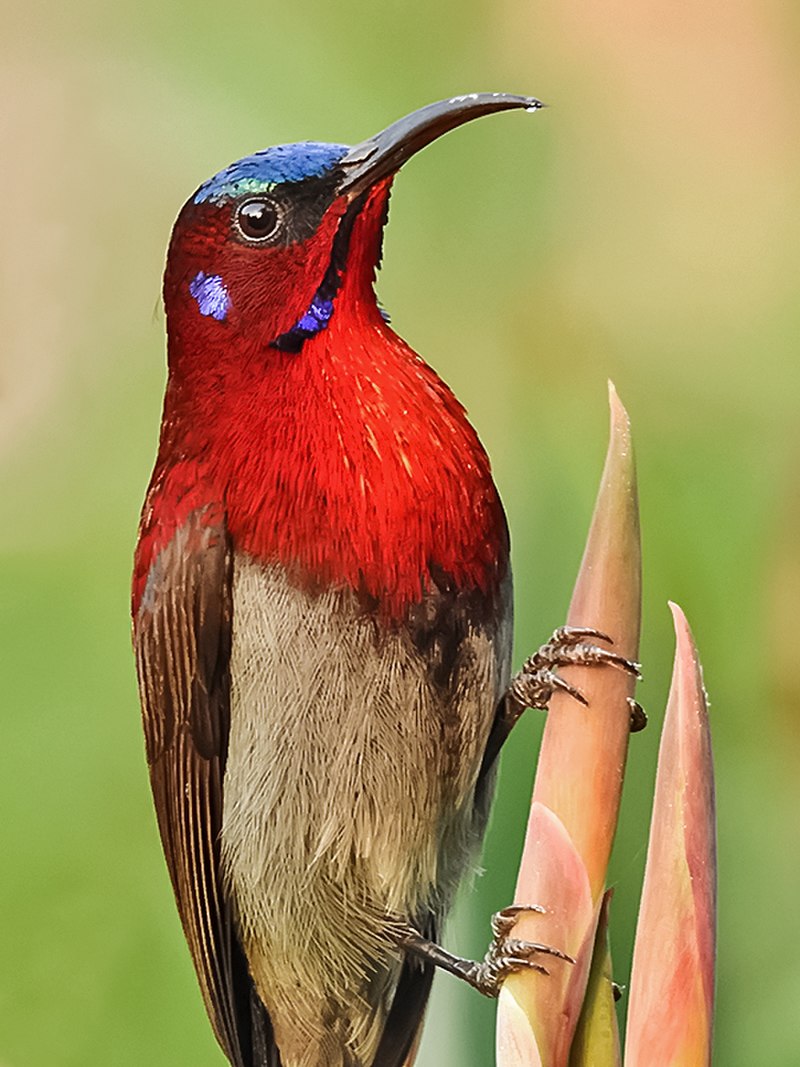
Sunbirds are a family of passerine birds known as the Nectariniidae, found mainly in Africa and parts of Asia. These small, slender birds have downward-curved bills and often feature brightly coloured iridescent feathers.
The males usually display longer tail feathers than females. Sunbird diets consist mostly of nectar from flowers which they sip using their long bill while hovering above them like hummingbirds do.
They also eat insects such as spiders and moths to supplement their nutrition needs.
Sunbirds can be seen flitting around gardens or parks looking for food sources – sometimes alone but more commonly in pairs or families during breeding season when they become quite territorial over an area where they feed on plants with abundant supplies of nectar.Scientific classification:
| Kingdom | Animalia |
| Phylum | Chordata |
| Class | Aves |
| Order | Passeriformes |
| Superfamily | Passeroidea |
| Family | Nectariniidae Vigors, 1825 |
2. Hamerkop
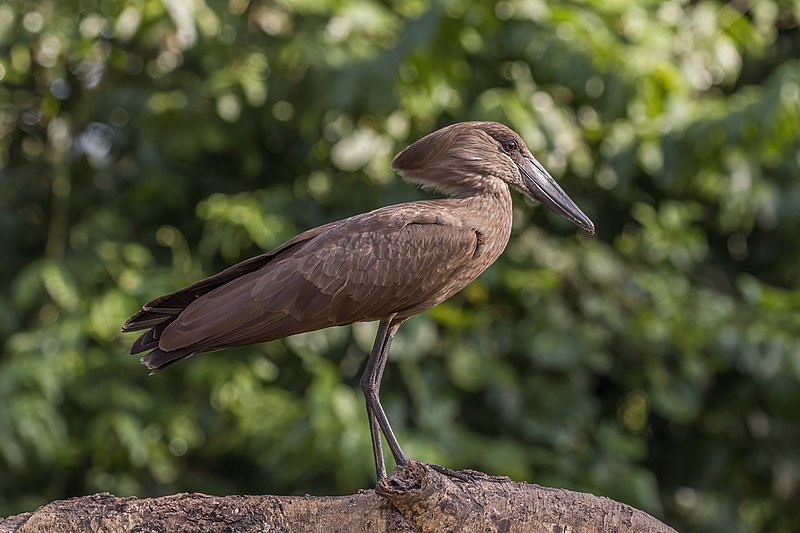
The Hamerkop is a unique wading bird found across sub-Saharan Africa and as far east as India.
It has an unmistakable silhouette, with its long bill topped by a crest at the back of its head that gives it the look of a hammerhead shark.
Its plumage consists mainly of browns and greys, providing excellent camouflage in reed beds.
The species was once classified alongside storks but is now believed to be closely related to pelicans and shoebills instead.
This medium-sized bird feeds on insects, fish, frogs or small reptiles which it captures from shallow water or plucks from trees near bodies of water.
Despite being considered ‘unlucky’ by some cultures due to superstition surrounding their appearance they are actually quite important for controlling populations of certain pests.Scientific classification:
| Kingdom | Animalia |
| Phylum | Chordata |
| Class | Aves |
| Order | Pelecaniformes |
| Family | Scopidae |
| Genus | Scopus |
| Species | S. umbretta |
3. Purple-Breasted Sunbird
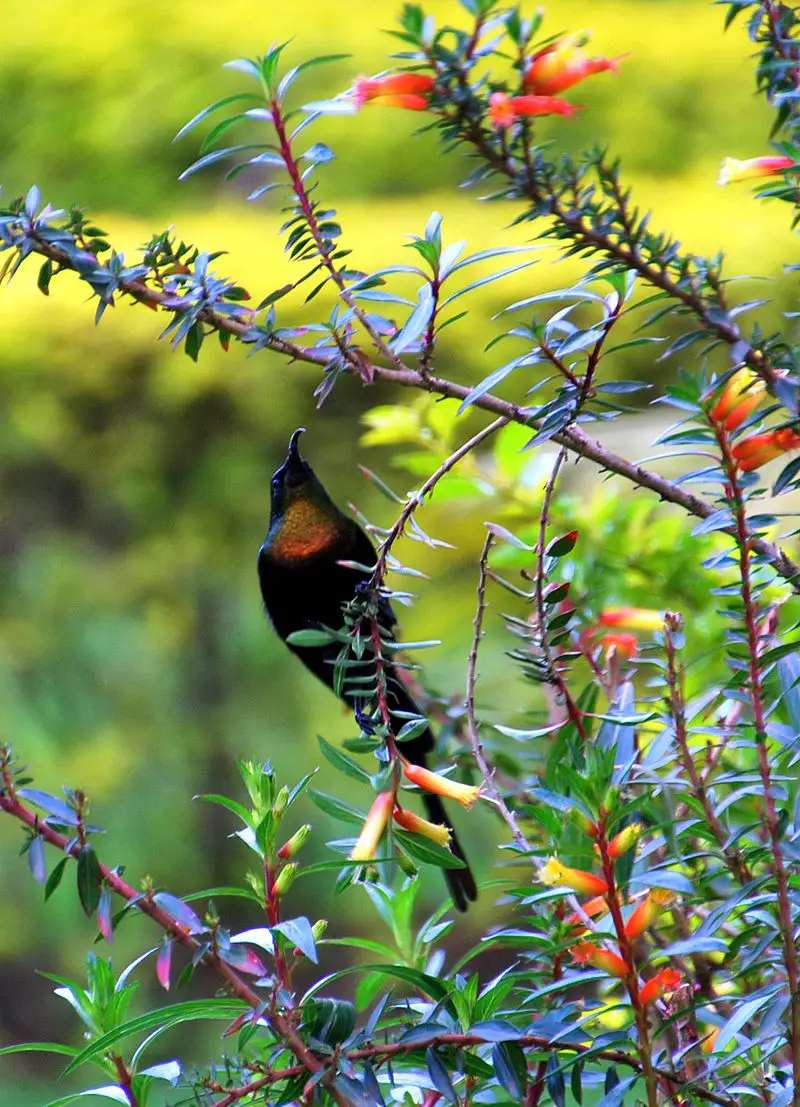
The beautiful Purple-breasted Sunbird is a species of bird found in Burundi, Democratic Republic of the Congo, Rwanda and Uganda. It belongs to the family Nectariniidae which are known for their attractive colors.
The male sunbirds have an iridescent purple throat and breast with a light brown head and back while females tend to be duller in coloration.
These birds feed mainly on nectar from flowers but also eat insects such as beetles and caterpillars when available.
They can often be seen perched atop tall trees searching for food or hovering near flowering plants collecting nectar from them using their long curved bills.
Their bright plumage makes them easily recognizable amongst other birds making it easy for us to appreciate their beauty.Scientific classification:
| Kingdom | Animalia |
| Phylum | Chordata |
| Class | Aves |
| Order | Passeriformes |
| Family | Nectariniidae |
| Genus | Nectarinia |
| Species | N. purpureiventris |
Also Featured In: Birds of Nyungwe Forest National Park, Endemic Birds of Uganda that You Need to Know
4. Regal Sunbird
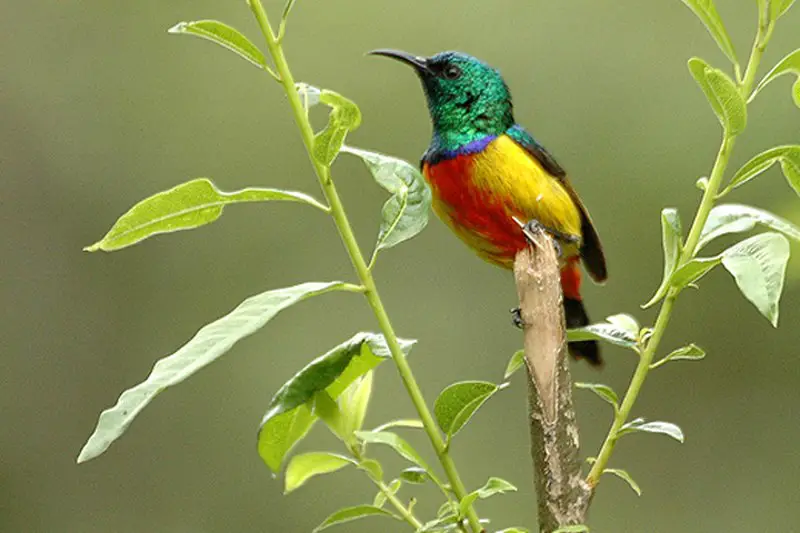
The Regal Sunbird is a small and elegant species of bird that can be found in the Albertine Rift montane forests.
The adult males have an iridescent golden-green coloured head, dark wings and tail, as well as a boldly marked red & yellow breast and belly.
Females are less colourful but still stunning with their dull olive upper parts, paired alongside faint streaks of yellow on the underside.
These sunbirds feed mainly off nectar from wild flowers which they get using their long curved bills; however they also eat insects for additional nutrients.
They tend to stay close to flowering shrubs or trees whilst singing beautiful songs throughout the day – making them one of nature’s most treasured creatures.Scientific classification:
| Kingdom | Animalia |
| Phylum | Chordata |
| Class | Aves |
| Order | Passeriformes |
| Family | Nectariniidae |
| Genus | Cinnyris |
| Species | C. regius |
5. Blue-Headed Sunbird
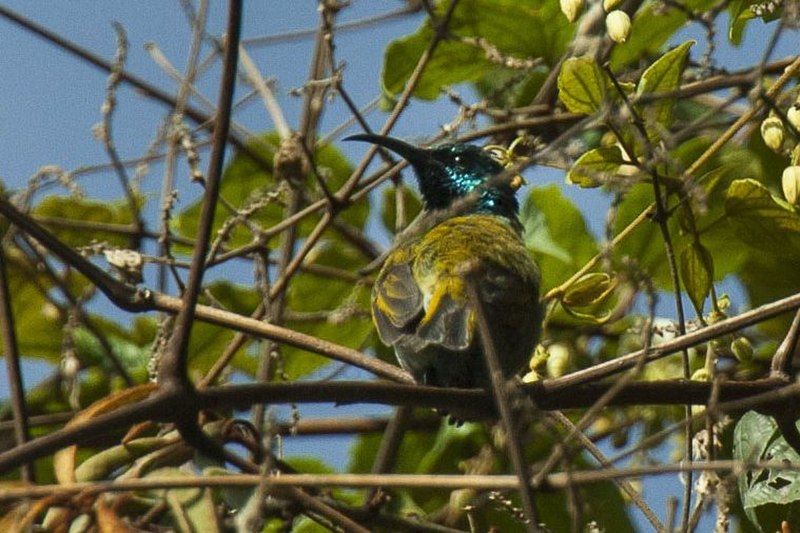
The Blue-Headed Sunbird is a beautiful species of bird found in Burundi, the Democratic Republic of Congo, Rwanda and Uganda.
It belongs to the family Nectariniidae and has striking blue head feathers with contrasting yellow underbelly plumage.
The sunbird also features an impressive long pointed beak which it uses for feeding on nectar from flowering plants.
Additionally, they are known to feed on insects as well due to their active lifestyle – often seen flying rapidly between flowers while hovering like hummingbirds.
Their unique colouration makes them stand out amongst other birds in its range; making this incredible bird one that should not be missed when encountered.Scientific classification:
| Kingdom | Animalia |
| Phylum | Chordata |
| Class | Aves |
| Order | Passeriformes |
| Family | Nectariniidae |
| Genus | Cyanomitra |
| Species | C. alinae |
6. Strange Weaver
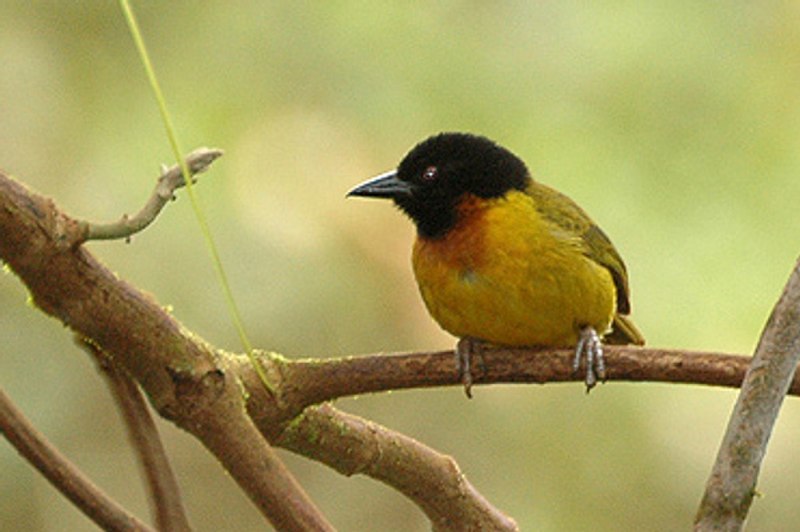
The Strange Weaver is a species of bird belonging to the Ploceidae family, found in Albertine Rift montane forests. It is characterized by its vibrant plumage with yellow belly and head feathers along with black wings, tail and back.
Its long bill has a slight downward curve, allowing it to easily reach inside deep flowers for nectar. The male’s bright colors are particularly striking during breeding season when they become even brighter as part of their courtship display.
This species feeds on insects such as grasshoppers and beetles that it catches while hovering over vegetation or while searching among tree branches; also consuming small amounts of fruits occasionally rips off from nearby trees or shrubs.
They build nests near water sources where both males and females take turns incubating eggs until hatching takes place after 18 days duration which marks the beginning of new life cycle for this exotic creature.Scientific classification:
| Kingdom | Animalia |
| Phylum | Chordata |
| Class | Aves |
| Order | Passeriformes |
| Family | Ploceidae |
| Genus | Ploceus |
| Species | P. alienus |
7. Dusky Crimsonwing
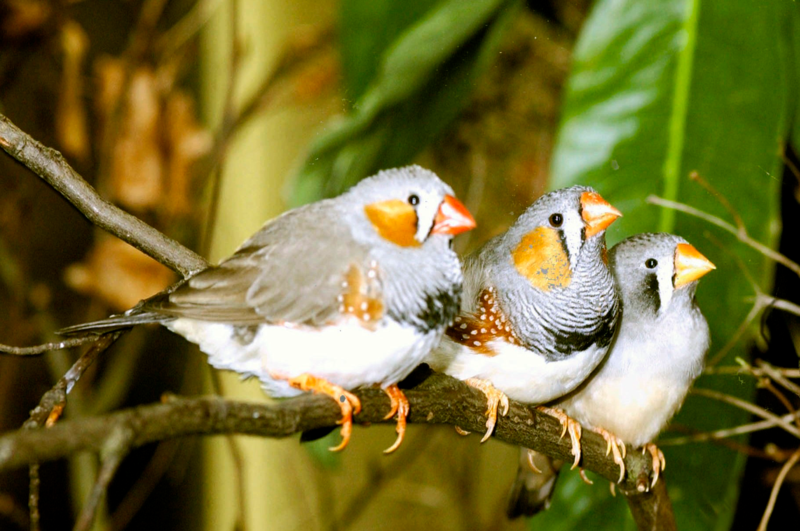
The Dusky Crimsonwing is a beautiful species of estrildid finch found in Africa. It has an estimated global range of 78,000km2 and can be found mainly in the Albertine Rift montane forests.
The bird’s binomial name commemorates English explorer Frederick John Jackson. Its plumage is quite unique with its feathers ranging from dark brown to rufous-red on the back and wings, while it’s belly is white or greyish-white along with black streaking throughout its body.
This vibrant coloured creature also features a red eye ring which adds immensely to its beauty when seen up close.
As for dieting habits, this species likes to feed on small insects as well as fruits like berries that are natively grown in their habitat area.
All these traits combined make them one of nature’s most exquisite creatures whose presence will surely leave anyone mesmerized.Scientific classification:
| Kingdom | Animalia |
| Phylum | Chordata |
| Class | Aves |
| Order | Passeriformes |
| Family | Estrildidae |
| Genus | Cryptospiza |
| Species | C. jacksoni |
8. Jacanas
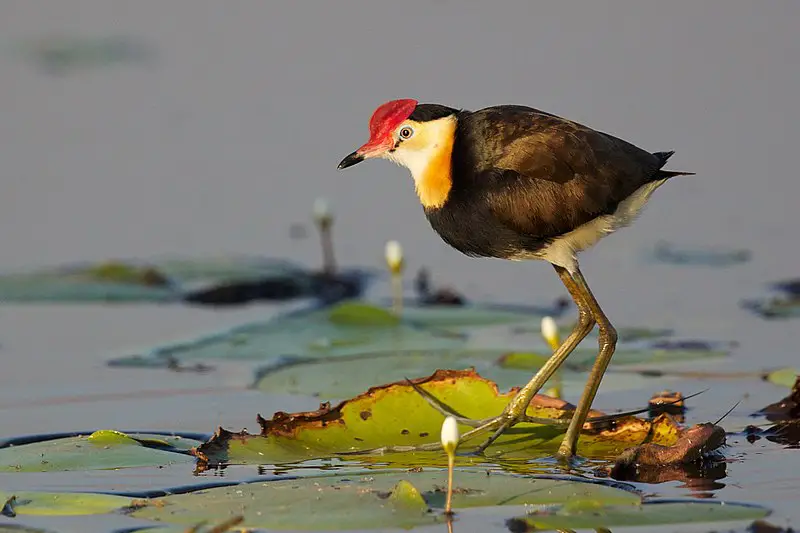
Jacanas are tropical waders belonging to the Jacanidae family. They have distinctive elongated toes and toenails which help them forage on floating or semi-emergent aquatic vegetation.
This adaptation gives them their nickname “Jesus birds” as they seem to be able to walk on water.
The female jacanas are also unique amongst bird species in that they take charge of nest building, incubation and caring for young while males perform courtship displays.
These unusual birds can be found throughout the world’s tropical regions where they inhabit wetlands such as swamps, marshes and shallow lakes with lily pads.
With a wide variety range due their special adaptations these beautiful creatures will surely continue living life at ease around our planet’s warmest waters.Scientific classification:
| Kingdom | Animalia |
| Phylum | Chordata |
| Class | Aves |
| Order | Charadriiformes |
| Suborder | Thinocori |
| Family | Jacanidae Stejneger, 1885 |
9. Handsome Spurfowl
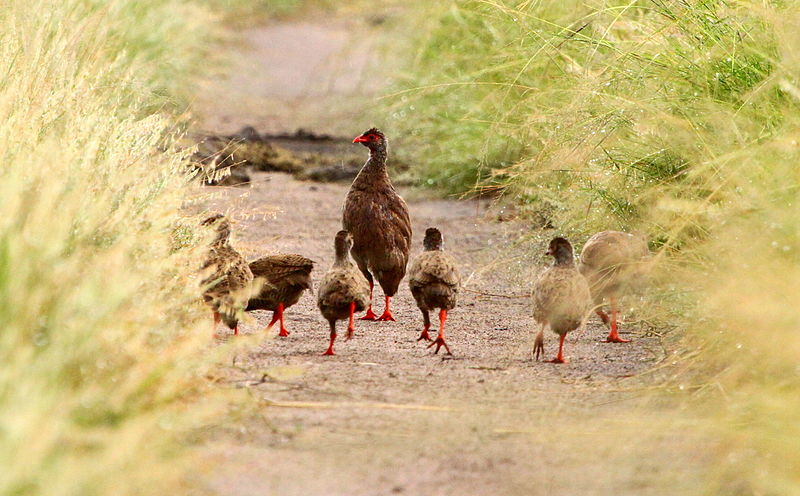
The Handsome Spurfowl is a beautiful bird found in forests across Africa. It has reddish-brown plumage, a grey head and red bill and legs that give it an attractive appearance.
Its eyes have brown irises with bare red orbital skin around them, while its underside is rufous grey. Both sexes are similar in size but the female may be slightly smaller than the male.
The young birds have duller feathers compared to adults. This species typically feeds on seeds, insects, fruits and other small creatures found near ground level – making it quite easy for people to spot when out walking or wildlife watching.Scientific classification:
| Kingdom | Animalia |
| Phylum | Chordata |
| Class | Aves |
| Order | Galliformes |
| Family | Phasianidae |
| Genus | Pternistis |
| Species | P. nobilis |
10. Congo Bay Owl
The Congo bay owl is a species of barn owls, belonging to the Tytonidae family and found in the Albertine Rift montane forests.
It was first described by Belgian naturalist Henri Schouteden in 1952, naming it Phodilus prigoginei as an honour for Russian mineralogist and ornithologist A. Prigogine.
These birds are medium-sized with reddish brown colouration on their upperparts and buff colouring on the underparts.
They have yellow eyes with white eyebrows, along with black speckles across their wings which serve as camouflage from predators.
The diet of these owls consists mainly of small rodents such as mice or rats but may also include other vertebrates like lizards or snakes if available locally.
They usually hunt at night due to its nocturnal nature while roosting during daytime atop trees near riversides or dense woods where food sources can be easily accessed.Scientific classification:
| Kingdom | Animalia |
| Phylum | Chordata |
| Class | Aves |
| Order | Strigiformes |
| Family | Tytonidae |
| Genus | Phodilus |
| Species | P. prigoginei |
11. Yellow-Eyed Black Flycatcher
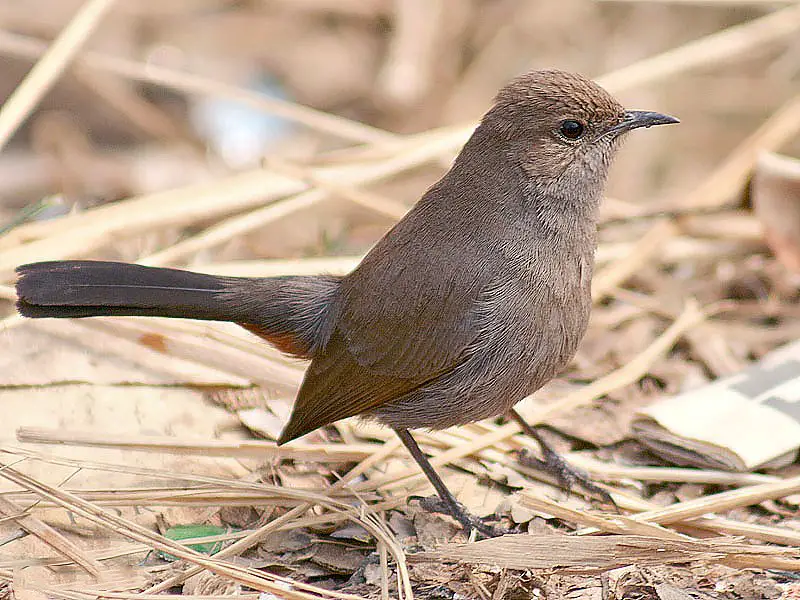
The Yellow-eyed black flycatcher is a small, passerine bird native to the Albertine Rift montane forests. It belongs to the genus Melaenornis and family Muscicapidae.
This beautiful bird has yellow eyes with white eyebrows that contrast sharply against its jet black plumage, giving it an eye-catching look.
Its beak is short and stubby while its legs are relatively long compared to other birds of similar size; they have been known to use them for pouncing on their insect prey.
The diet of this species mainly consists of insects such as flies, beetles or caterpillars but can also include some fruits depending on what’s available in their environment.
As habitat destruction continues across the world, these beautiful birds may become more vulnerable which makes conserving their natural habitats all the more importantScientific classification:
| Kingdom | Animalia |
| Phylum | Chordata |
| Class | Aves |
| Order | Passeriformes |
| Family | Muscicapidae |
| Genus | Melaenornis |
| Species | M. ardesiacus |
12. Red-Faced Woodland Warbler
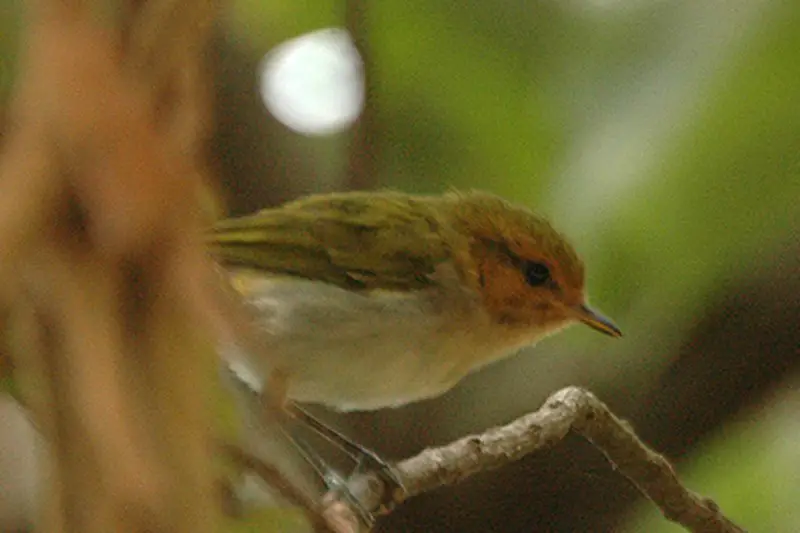
The Red-faced Woodland Warbler is a species of leaf warbler found in the family Phylloscopidae. It is closely related to two other species, the Yellow-throated Woodland Warbler and Laura’s Woodland Warbler.
These birds are native to East Africa, mostly inhabiting parts of Uganda, DR Congo and South Sudan. They nest among trees or shrubs near water sources like rivers or streams.
The males have bright red faces with white throats surrounded by yellowish feathers on their lower cheeks while females possess duller plumage than males but still display faint reddish coloring on their heads and chests.
During breeding season they sing melodious songs that can be heard from quite far distances during sunrise hours when most activity takes place around nesting sites.Scientific classification:
| Kingdom | Animalia |
| Phylum | Chordata |
| Class | Aves |
| Order | Passeriformes |
| Family | Phylloscopidae |
| Genus | Phylloscopus |
| Species | P. laetus |
13. Albertine Owlet
The Albertine owlet is a small bird native to the montane forests of the Albertine Rift. It belongs to the family Strigidae and some authorities classify it as a subspecies of African barred owlet, while others such as BirdLife consider it its own species.
The two birds are very similar in appearance; both have white eyebrows, dark eyes and brown streaked feathers with buff edges on their wings and tail.
They measure between 22–24 cm in length and weigh around 86–99 gm. Their diet consists mostly of insects but they may also eat frogs, lizards or even small mammals.
These nocturnal birds usually hunt alone by perching on branches then flying out quickly after prey has been spotted below them.
Due to deforestation caused by human activities these beautiful creatures are now endangered so we should do our best to protect their habitats for future generations.Scientific classification:
| Kingdom | Animalia |
| Phylum | Chordata |
| Class | Aves |
| Order | Strigiformes |
| Family | Strigidae |
| Genus | Glaucidium |
| Species | G. albertinum |
14. Kungwe Apalis
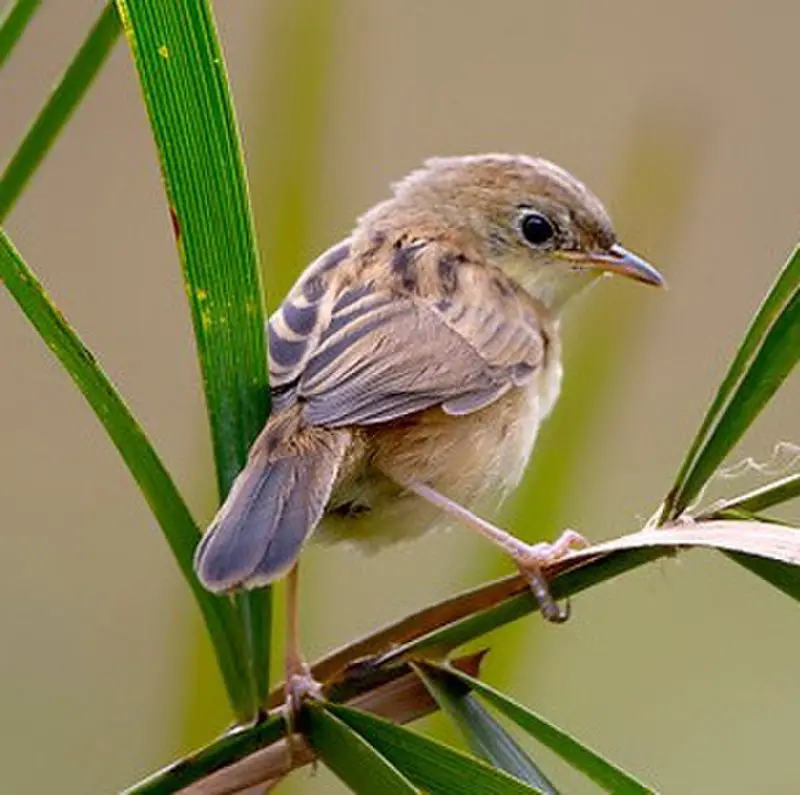
The Kungwe apalis is a species of bird in the Cisticolidae family. Found in Burundi, Democratic Republic of Congo, Rwanda and Tanzania, it prefers habitats such as subtropical or tropical dry forests and moist montane forests.
Unfortunately this unique little creature is threatened by habitat loss due to human activities such as logging and deforestation that reduce their natural range.
It was previously classified as a subspecies of Buff-throated Apalis but has since been reclassified into its own distinct species.
The Kungwe apalis stands out with its bright yellow forehead interspersed with black stripes on either side while the rest of its body displays various shades of browns and greys along with white spots near the wings.Scientific classification:
| Kingdom | Animalia |
| Phylum | Chordata |
| Class | Aves |
| Order | Passeriformes |
| Family | Cisticolidae |
| Genus | Apalis |
| Species | A. argentia |
15. Mountain Masked Apalis
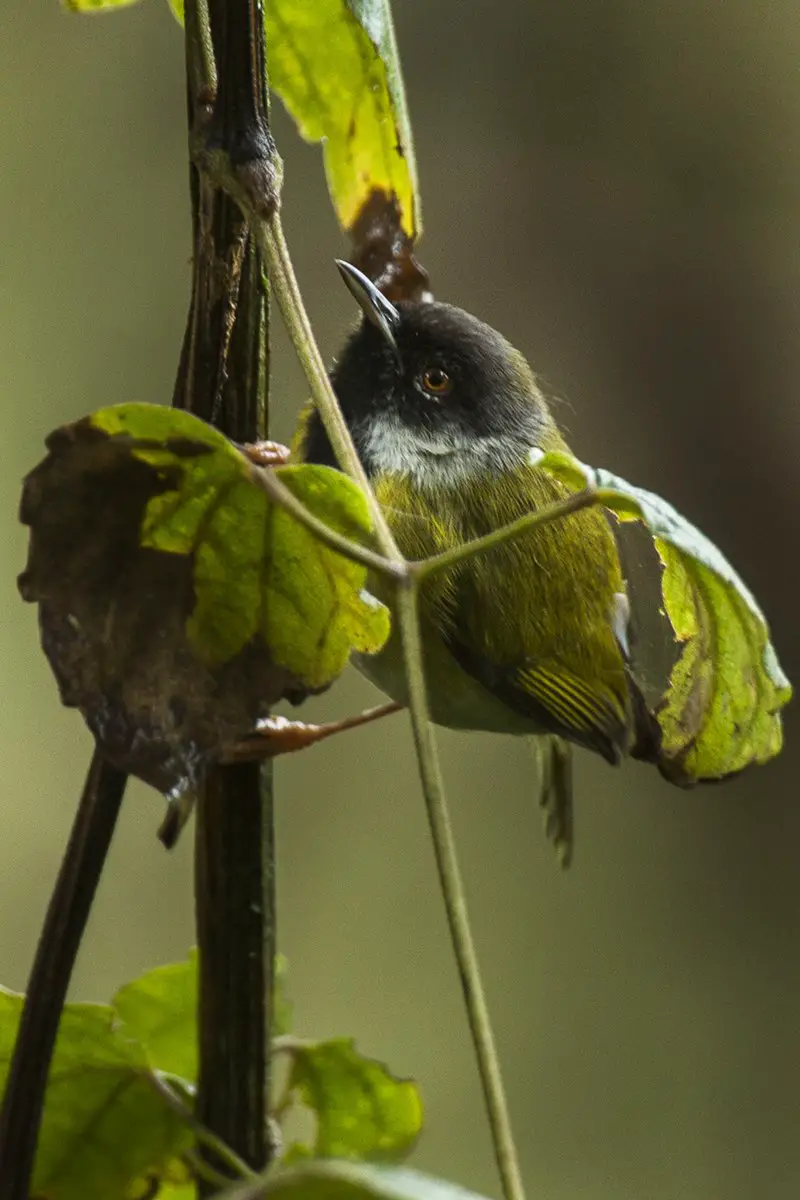
The Mountain masked apalis, or black-faced apalis, is a species of bird from the family Cisticolidae. It can be found in Albertine Rift montane forests and was first described back in 1902.
This small but striking bird has dark gray upperparts with white markings on its wings and tail feathers, as well as pale gray underparts adorned with two bold black stripes across its chest.
The most distinctive feature of this species is the jet-black mask that frames its eyes like an eye patch – making it easily identifiable amongst other birds within their range. Its diet consists primarily of insects but they will feed on fruits when available too.
They are fairly common throughout their habitat and make delightful additions to any outdoor space where they can be spotted singing sweetly while flitting between trees and shrubs searching for food sources.Scientific classification:
| Kingdom | Animalia |
| Phylum | Chordata |
| Class | Aves |
| Order | Passeriformes |
| Family | Cisticolidae |
| Genus | Apalis |
| Species | A. personata |
16. Rockefeller’s Sunbird
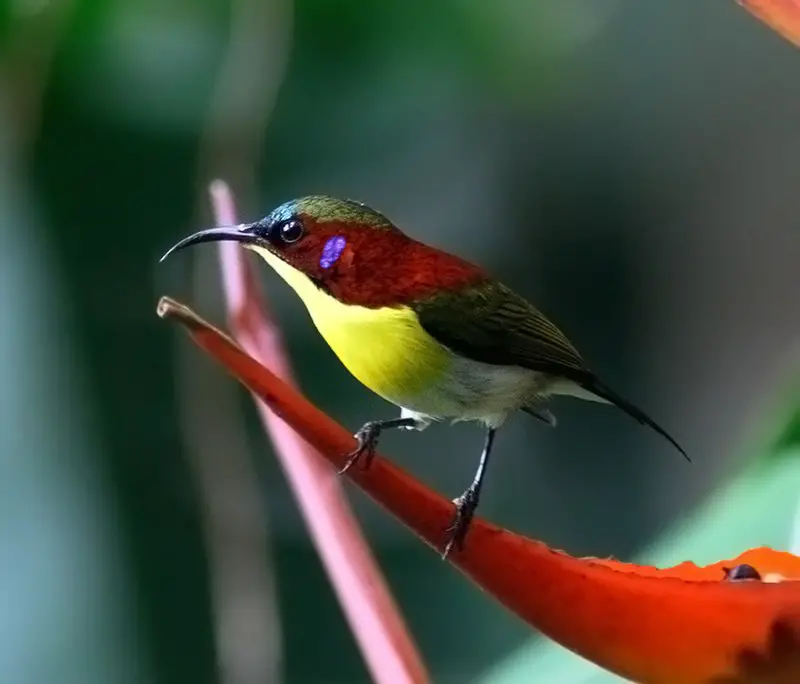
Rockefeller’s sunbird is a species of bird found in the Albertine Rift in eastern Democratic Republic of Congo. It belongs to the Nectariniidae family and Cinnyris genus, which was formerly part of the Nectarinia genus.
This unique species has white-tipped tail feathers with striking bronze upperparts and yellowish underparts that make it stand out from its peers.
Its diet consists mainly of nectar from flowers as well as small insects like spiders, ants and larvae for protein intake.
Rockefeller’s sunbird is dependent on montane forests for its habitat; however some areas have been affected by deforestation due to human activities such as logging or subsistence agriculture leading to declines in population numbers.
Conservation efforts are needed now more than ever if this beautiful creature is going to survive into future generationsScientific classification:
| Kingdom | Animalia |
| Phylum | Chordata |
| Class | Aves |
| Order | Passeriformes |
| Family | Nectariniidae |
| Genus | Cinnyris |
| Species | C. rockefelleri |
17. Stripe-Breasted Tit
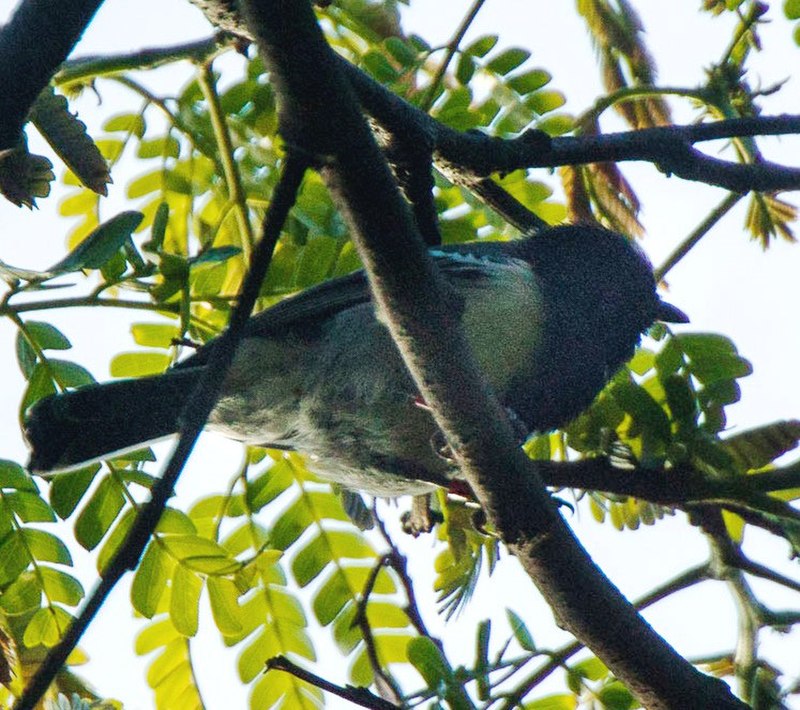
The Stripe-breasted Tit is a species of bird found in four countries: Burundi, Democratic Republic Congo, Rwanda and Uganda.
It inhabits subtropical or tropical moist montane forests where it can be seen foraging for food on the ground among foliage.
This small but beautiful bird has an unmistakable appearance with black and white stripes across its chest. Its head is also covered by delicate black feathers that contrast nicely against its bright yellow eyes.
The Stripe-breasted Tit was formerly classified within the genus Parus until a molecular phylogenetic analysis revealed that it should actually belong to Melaniparus instead – thus requiring a separate scientific name.
Despite this classification change however, one thing remains true; these birds are truly captivating creatures who deserve our utmost respect and protection from any potential threats they may face in their natural habitats.Scientific classification:
| Kingdom | Animalia |
| Phylum | Chordata |
| Class | Aves |
| Order | Passeriformes |
| Family | Paridae |
| Genus | Melaniparus |
| Species | M. fasciiventer |
18. Grauer’s Swamp Warbler
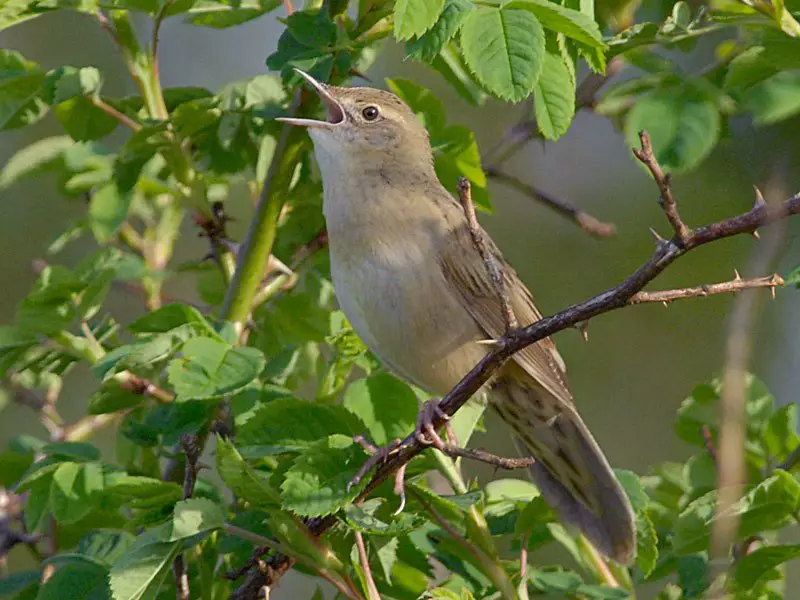
Grauer’s swamp warbler is an Old World warbler found in Burundi, Democratic Republic of the Congo, Rwanda and Uganda.
It enjoys freshwater lakes and marshes as its natural habitats but unfortunately these are threatened due to habitat loss.
Endemic to the Albertine Rift, they inhabit montane swamps above 1900m elevation.
Investigations have been carried out into their diet which consists mainly of insects such as ants and beetles with some spiders too.
They may also be seen foraging on the ground or perched on vegetation near water sources.
The Grauer’s Swamp Warblers are relatively small birds that breed during summer months from June until September in Central Africa where a single egg is laid in a cup-shaped nest suspended between two reeds over water bodies.Scientific classification:
| Kingdom | Animalia |
| Phylum | Chordata |
| Class | Aves |
| Order | Passeriformes |
| Family | Locustellidae |
| Genus | Bradypterus |
| Species | B. graueri |
19. Bee-Eater

Bee-eaters are one of the most beautiful and vibrant birds in existence. They have a slender body, long wings, down turned bills and their signature elongated central tail feathers which make them instantly recognizable from afar.
Their plumage is incredibly colorful with many shades ranging from blues to greens to reds that glisten when they fly through the air.
These stunning creatures can be found all over Africa, Asia, Southern Europe, Australia and New Guinea where they feed mainly on bees but also other insects like flies or wasps as well as small mammals such as lizards or rodents.
Bee-eaters live in colonies near rivers or wetlands so that they may easily hunt for food while staying close together for safety purposes.
Additionally it allows them to better display their impressive courtship dances during mating season.Scientific classification:
| Kingdom | Animalia |
| Phylum | Chordata |
| Class | Aves |
| Order | Coraciiformes |
| Family | Meropidae Rafinesque, 1815 |
20. Cinnamon-Chested Bee-Eater
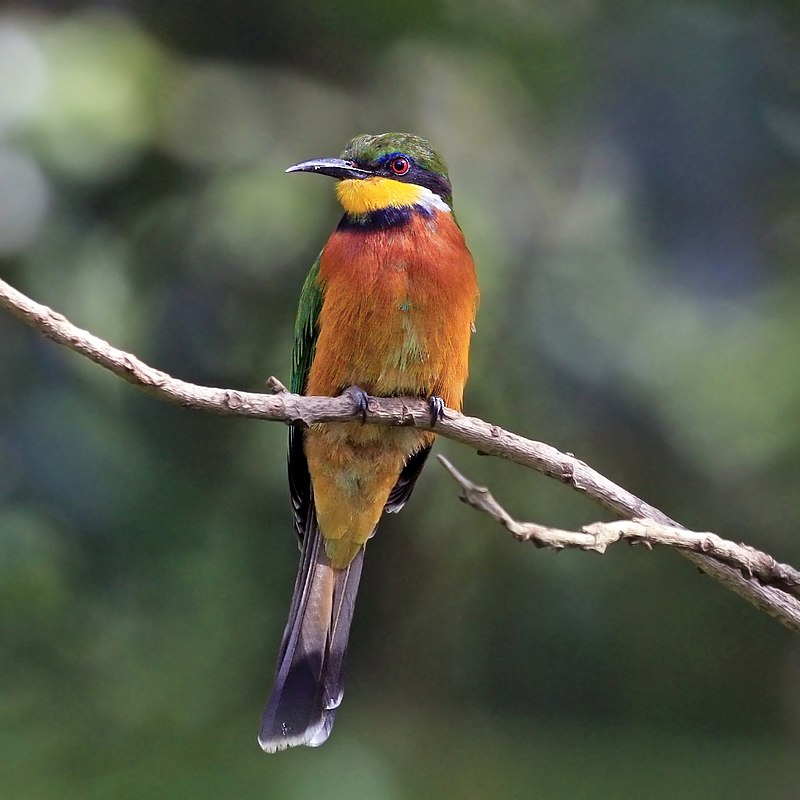
The Cinnamon-chested Bee-eater is a vibrant species of bird found in East Africa. It has bright green heads, upper parts and tails with its chest being cinnamon coloured.
These birds measure 22 centimetres (8.7 in) long and weigh between 17–38 grams (0.60–1.34 oz). Both sexes are identical in appearance, making it difficult to differentiate between male and female specimens without other methods such as DNA analysis or feather examination for gender determination purposes.
The Cinnamon-Chested Bee Eater feeds mainly on insects that they capture from the air using their sharp beak; however when food sources become scarce during dry seasons they also feed on fruits like figs or mangoes which makes them omnivorous too.
This colourful species lives primarily near rivers where there is plenty of foliage cover to hide away from predators while nesting but can also be spotted around open savannah grasslands hunting for prey so keep your eyes peeled if you’re travelling through these areas.Scientific classification:
| Kingdom | Animalia |
| Phylum | Chordata |
| Class | Aves |
| Order | Coraciiformes |
| Family | Meropidae |
| Genus | Merops |
| Species | M. oreobates |
21. Turaco
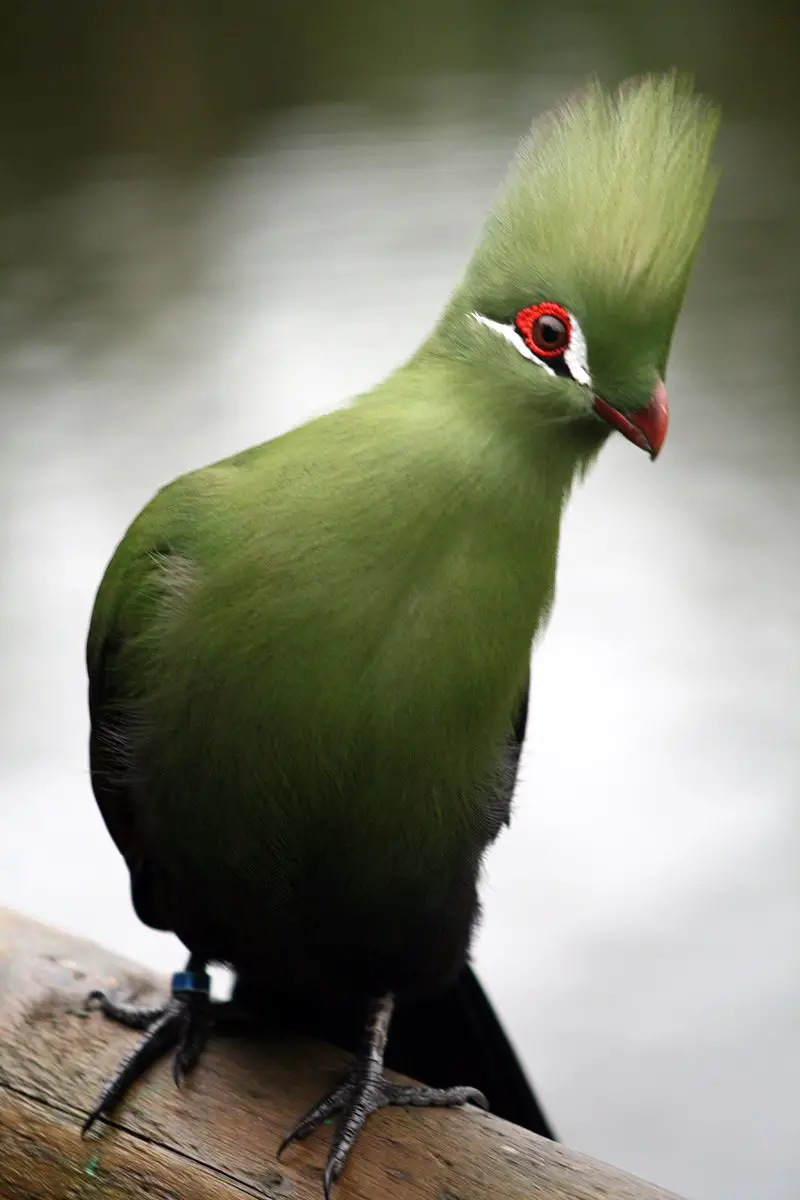
Turacos are a unique bird family that inhabit tropical and subtropical regions of Africa. They are also known as “banana-eaters” or “loeries” in southern Africa, due to their diet which consists mostly of fruit such as plantains.
These birds have an interesting semi-zygodactylous foot structure – the fourth toe can be switched back and forth while the second and third toes remain conjoined.
Turacos come in different sizes depending on species but they all generally boast bright colors like green, blue, purple or red feathers with vibrant yellow eyes.
In addition to being beautiful creatures, these birds make loud calls during mating season which makes them even more special.Scientific classification:
| Kingdom | Animalia |
| Phylum | Chordata |
| Class | Aves |
| Clade | Otidimorphae |
| Order | Musophagiformes Seebohm, 1890 |
| Family | Musophagidae Lesson, 1828 |
22. Stone-Curlew

Stone-curlews, also known as dikkops or thick-knees, are a family of birds that have adapted to live in tropical and temperate regions throughout the world.
They can be found in Africa, Asia and Australia with two or more species per region. Despite being classified as waders, most prefer dry arid habitats over moist wetlands.
Stone-curlews typically have long legs which help them navigate through their preferred terrain efficiently; some species even stand at an impressive height when standing on those long legs.
Additionally they feature cryptic plumage which helps them blend into their surroundings while hunting for prey such as insects and small mammals like rodents.
These unique bird’s calls are easily recognizable; it has been said that hearing one is similar to listening to someone whistling ‘Keee Weee’.Scientific classification:
| Kingdom | Animalia |
| Phylum | Chordata |
| Class | Aves |
| Order | Charadriiformes |
| Suborder | Chionidi |
| Family | Burhinidae Mathews, 1912 |
23. Painted-Snipe
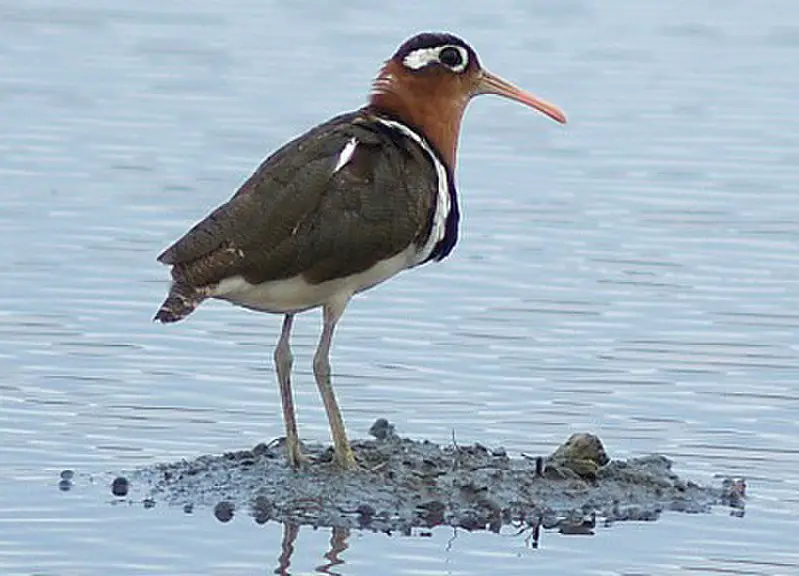
Painted snipes are beautiful and unique wading birds found in the Rostratulidae family. They have short legs, long bills, and a striking plumage which distinguishes them from true snipes.
Males tend to be smaller than females with duller overall coloration. There are three species of painted snipe.
The Greater Painted Snipe, Lesser Painted Snipe, and Australian Painted Snipe – all three have different habitats ranging from wetland pools to grasslands or mangroves depending on their region.
These birds feed mainly on earthworms but also consume insects, crustaceans and plant material when available.
As they rely heavily on wetlands for breeding purposes it is important that we protect these precious habitats so that this special bird can continue to thrive.Scientific classification:
| Kingdom | Animalia |
| Phylum | Chordata |
| Class | Aves |
| Order | Charadriiformes |
| Suborder | Thinocori |
| Family | Rostratulidae Coues, 1888 |
24. Threskiornithidae
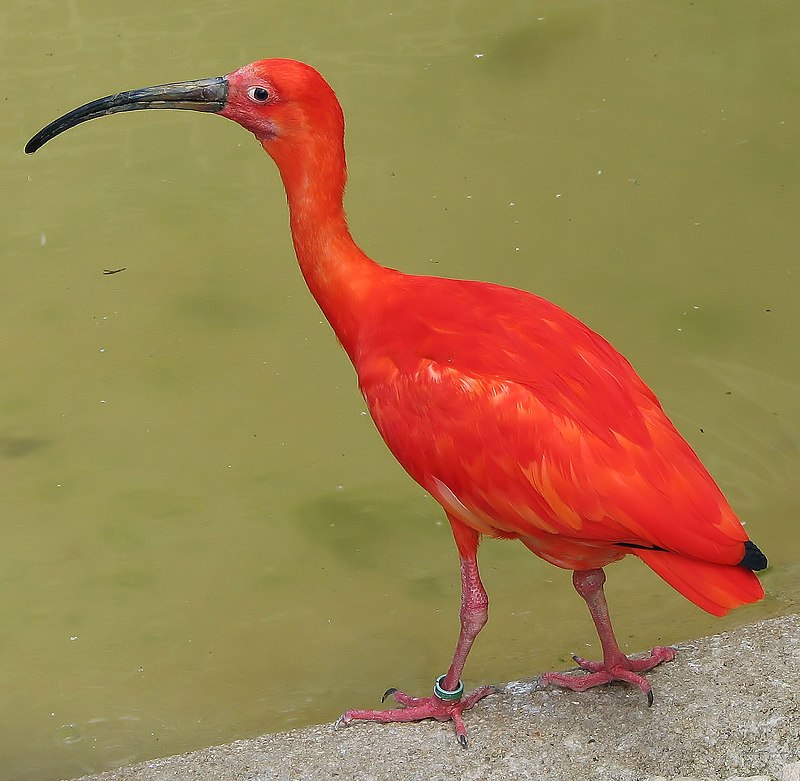
Threskiornithidae is a family of large wading birds which includes 36 species. These birds are traditionally divided into two subfamilies – the ibises and the spoonbills.
However, recent genetic analysis has shown that spoonbills actually belong to Old World ibis group, while New World ibises form an early offshoot from this lineage.
Threskiornithidse members have long curved beaks with serrated edges used for catching fish in shallow water or mudflats, as well as other aquatic invertebrates like crustaceans and mollusks.
They also feed on plant matter such as grains and seeds found close to wetlands areas where they live.
This diverse diet makes them important scavengers in their ecosystems, helping maintain healthy populations of native wildlife by controlling insect numbers and dispersing energy-rich seeds throughout wetland habitats.Scientific classification:
| Kingdom | Animalia |
| Phylum | Chordata |
| Class | Aves |
| Order | Pelecaniformes |
| Suborder | Ardei |
| Family | Threskiornithidae Richmond, 1917 |
25. Heliornithidae
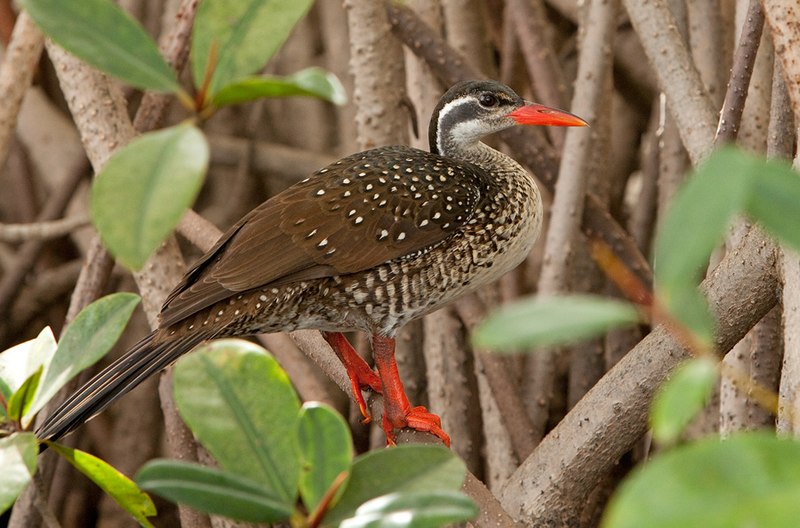
Heliornithidae, commonly known as finfoots, are a small family of tropical birds found in South America and Africa. They have webbed feet like grebes or coots, long necks, slender bodies and broad tails with sharp pointed bills.
Their diverse calls include whistles, squawks and croaks which they use to communicate with each other.
Finfoots feed mainly on fish but also consume insects such as water beetles and dragonflies near the surface of waterbodies.
They nest around rivers or lakes where there is plenty of cover from predators such as eagles or hawks.
During breeding season males can become quite territorial defending their territories against intruders by chasing them off aggressively using loud noises or even physical contact if necessary.Scientific classification:
| Kingdom | Animalia |
| Phylum | Chordata |
| Class | Aves |
| Order | Gruiformes |
| Family | Heliornithidae GR Gray, 1840 |
26. Mousebird
Mousebirds are a family of small, arboreal birds native to Africa. They have long tails and short wings which make them agile flyers who can maneuver in tight spaces.
Mousebirds feed on fruits, buds, flowers and insects found both on the ground or in trees. Their plumage is usually grey with white patches but some species may also be brightly colored.
The most notable physical feature of mousebird is their unique bill structure; it consists of two sharp upper mandibles that curve downwards towards each other creating an almost ‘beak-like’ shape at the tip.
This design allows them to easily pry apart fruit and twigs for food sources as well as aiding them when climbing up tree trunks or branches where they often sleep during the night time hours before waking again around dawn to resume their day’s activities such as foraging along branches or flying from one spot to another looking for more sustenance
27. Honeyguide
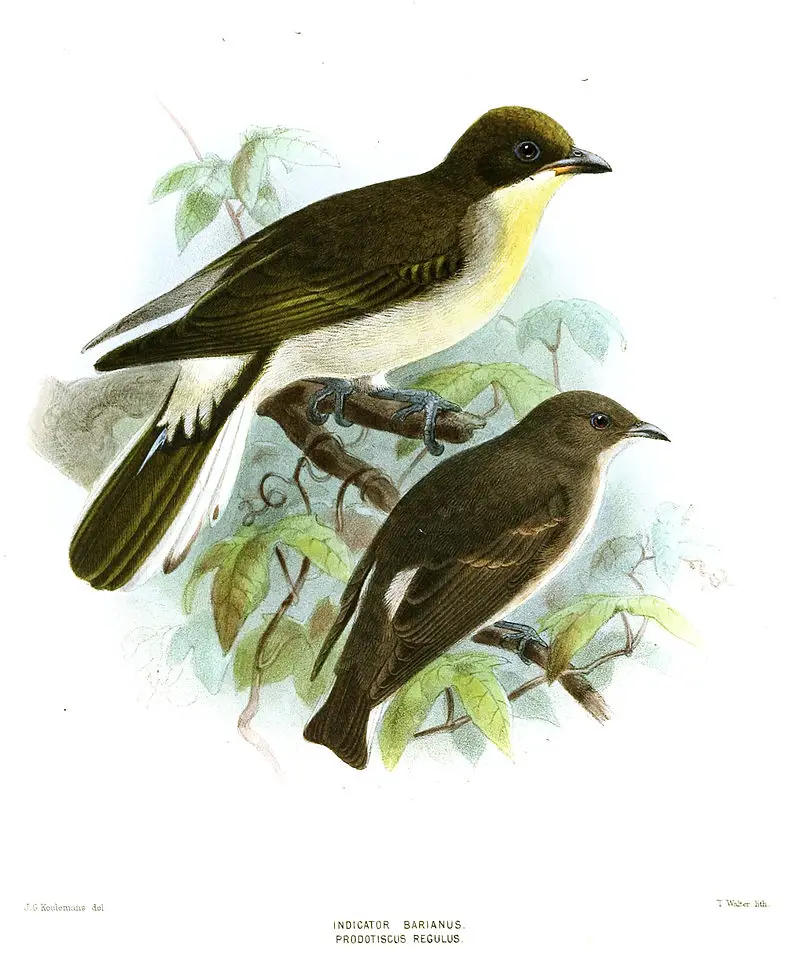
Honeyguides are small, near passerine birds belonging to the family Indicatoridae. Native to tropical regions of Asia and Africa, they’re best known for their unique relationship with humans.
They have a mutualistic association with people by leading them towards bee colonies in exchange for wax or honey from the hive after it has been opened up.
Honeyguide birds use special calls that sound like ‘tink-tink’ or ‘hweet hwuit’, which is thought to be their way of telling potential partners about food sources available nearby.
This remarkable ability makes them an invaluable resource for local communities and indigenous groups who rely on wild bees as a source of income and nutrition.Scientific classification:
| Kingdom | Animalia |
| Phylum | Chordata |
| Class | Aves |
| Order | Piciformes |
| Infraorder | Picides |
| Family | Indicatoridae Swainson, 1837 |
28. Stilts And Avocets
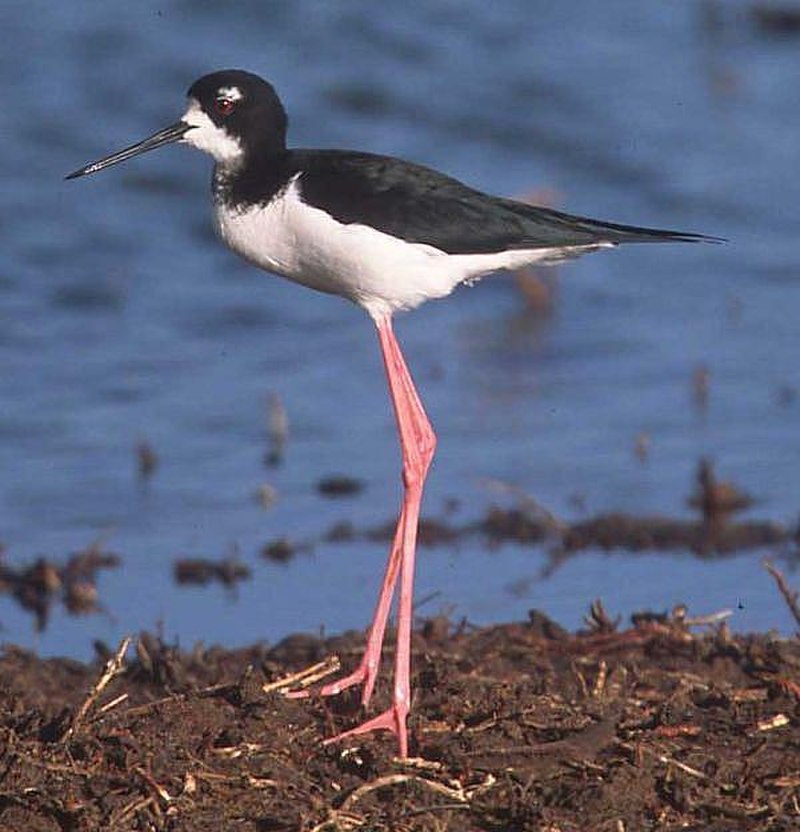
Stilts and avocets are two distinct groups of birds belonging to the family Recurvirostridae. They range in length from 30-46 cm (12-18 inches) and weigh between 140 – 435 g (4.9 – 15.3 ounces).
Males usually have slightly larger bodies than females, with long thin legs, necks and bills.
Avocet bills curve upwards uniquely while stilt beaks remain straight most times.
These wading birds live mainly near shorelines or wetlands where they feed on aquatic invertebrates like brine shrimp, insects etc., occasionally supplementing their diet with seeds or small fish too.
Stilts also inhabit open fields in search of food sources such as earthworms or grasshoppers during the non-breeding season.
Both groups migrate over large distances for warmer weathers when it gets cold outside.Scientific classification:
| Kingdom | Animalia |
| Phylum | Chordata |
| Class | Aves |
| Order | Charadriiformes |
| Suborder | Charadrii |
| Family | Recurvirostridae Bonaparte, 1854 |
29. Glareolidae
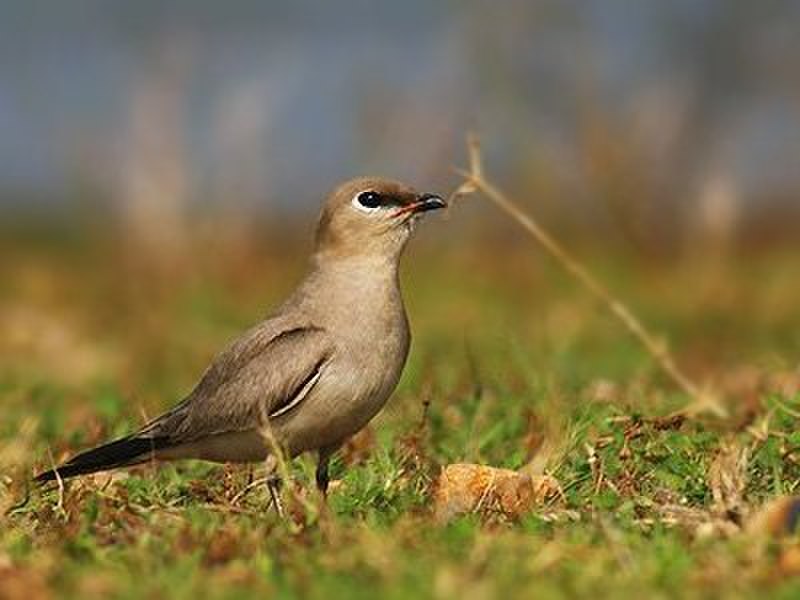
Glareolidae is a family of wading birds, consisting of four genera and 17 species. They are distinguished from other charadrii by their long bills which have a slight downward curve.
Glareolidae live around open grasslands and deserts, where they hunt for insects using the bill to probe into soil or vegetation.
Most species are found in Africa but two pratincoles inhabit parts of Europe and Asia as well.
Coursers tend to be larger than pratincoles with longer legs allowing them to run quickly across sandy dunes while feeding on small animals like lizards or spiders.
Pratincoles feed mainly on flying insects, snatching them out of midair with great agility during flight.
All glareolids share unique features such as large eyes that help it spot prey at night easily making this group one interesting bird family.Scientific classification:
| Kingdom | Animalia |
| Phylum | Chordata |
| Class | Aves |
| Order | Charadriiformes |
| Suborder | Lari |
| Family | Glareolidae CL Brehm, 1831 |
30. Pittas
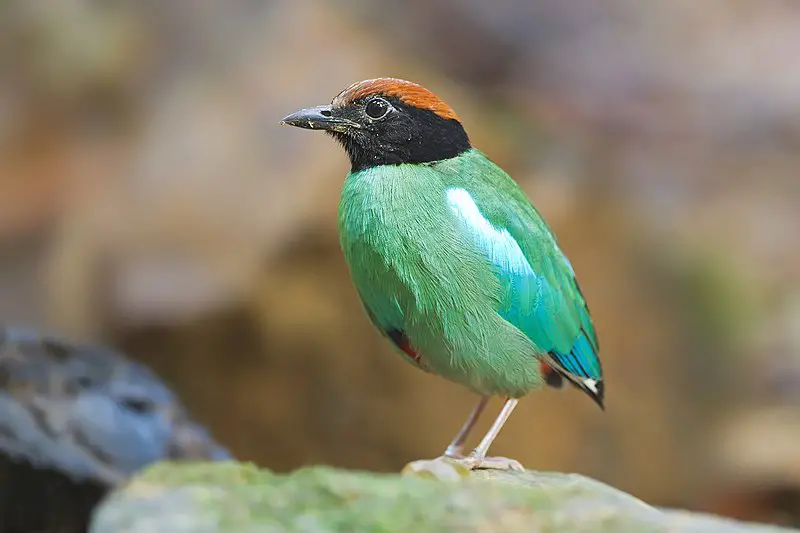
Pittas are a family of passerine birds known for their vibrant colors and unique appearance. They can be found in Asia, Australasia and Africa with around 40 to 42 species existing today.
These Old World suboscines have closest relatives among other bird genera such as Smithornis and Calyptomena.
Pittas inhabit tropical forests where they hop from branch to branch searching for insects or worms on the ground below them.
Their feathers are stunningly colored with combinations of blue, green, copper, purple or even yellow making them stand out amongst others in the forest canopy.Scientific classification:
| Kingdom | Animalia |
| Phylum | Chordata |
| Class | Aves |
| Order | Passeriformes |
| Suborder | Tyranni |
| Infraorder | Eurylaimides |
| Superfamily | Pittoidea |
| Family | Pittidae Authority disputed.[a] |
31. Cuckooshrike
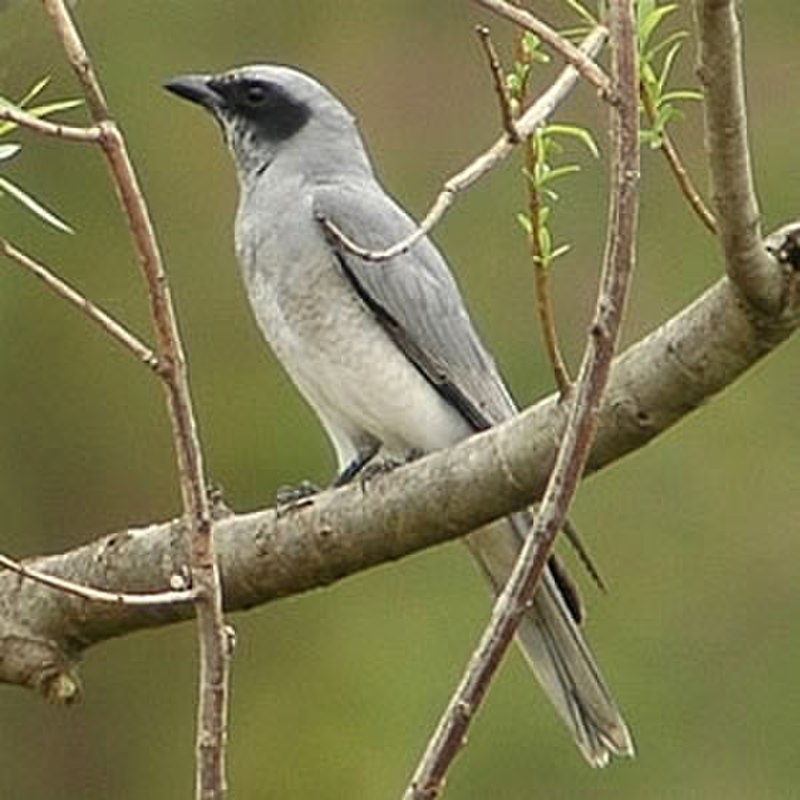
Cuckooshrikes are small to medium-sized passerine birds found mainly in the subtropical and tropical regions of Africa, Asia, and Australasia. They are usually arboreal, feeding on insects or fruit near foliage.
They have a stout bill with long wings and tails that can be used for balancing while perched on branches.
Cuckooshrike plumage is mostly grayish brown but some species may also feature black spots or stripes. The juvenile cuckooshrikes typically show more yellowish coloration than adults do.
These birds form monogamous pairs which often remain together year round defending their territory from other species as well as potential rivals within their own family group.Scientific classification:
| Kingdom | Animalia |
| Phylum | Chordata |
| Class | Aves |
| Order | Passeriformes |
| Infraorder | Corvides |
| Family | Campephagidae Vigors, 1825 |
Also Featured In: Asian Birds, Most Common Taiwan Birds
32. Viduidae
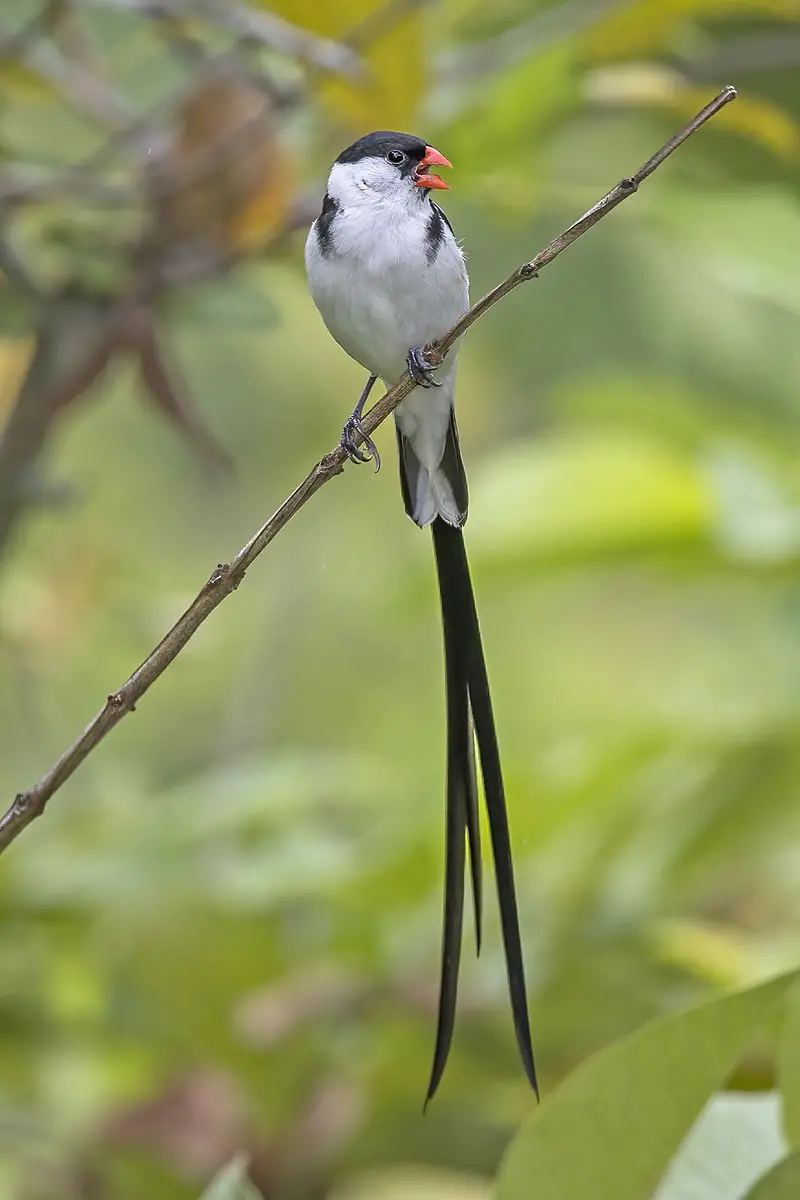
The Viduidae family of birds comprises the indigobirds, whydahs and cuckoo-finch. These species are small passerines native to Africa with black or indigo predominating in their plumage.
Male breeding whydah’s have distinctively long tails while all three types are obligate brood parasites which lay eggs in estrildid finch nests.
They feed mainly on insects found around grasses, shrubs and trees but also eat some fruits and seeds when available during colder seasons.
The female will fly off after laying her egg so as not to draw attention away from the host nest whilst allowing for a successful hatching rate of its own young within it.Scientific classification:
| Kingdom | Animalia |
| Phylum | Chordata |
| Class | Aves |
| Order | Passeriformes |
| Superfamily | Passeroidea |
| Family | Viduidae |
Also Featured In: Birds that You’ll Find in Puerto Rico,
33. Old World Orioles
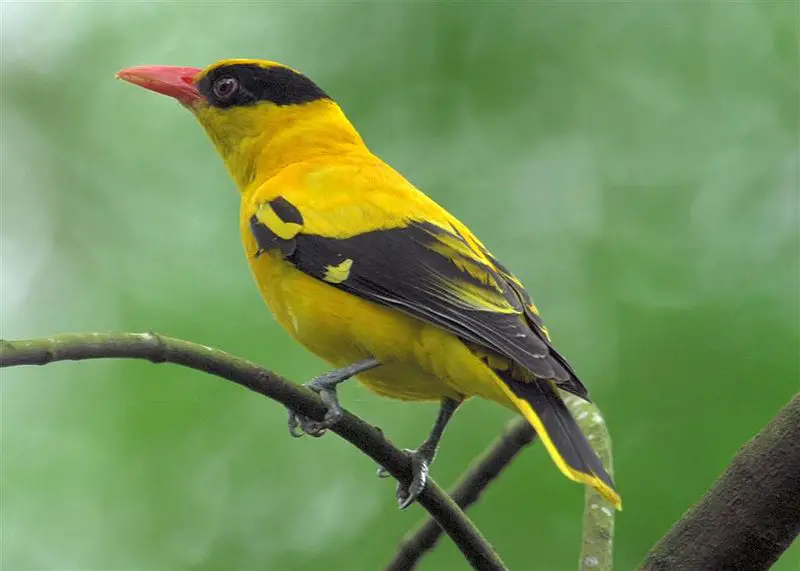
Old World orioles are a family of passerine birds found in the Old World. It comprises four genera: piopios, figbirds, pitohuis and the original genus Oriolus.
The African black-headed species have sometimes been removed from this latter group due to their distinct characteristics as well as other proposed splits for Oriolus.
These colorful birds can be identified by their bright yellow or orange plumage that often features darker markings on wings and head areas, although some species may also display a blue hue or stripes across the body feathers.
They typically feed on insects such as caterpillars and grasshoppers but will supplement with small fruits when available too – making them beneficial additions to gardens.Scientific classification:
| Kingdom | Animalia |
| Phylum | Chordata |
| Class | Aves |
| Order | Passeriformes |
| Superfamily | Orioloidea |
| Family | Oriolidae Vigors, 1825 |
34. Trogon
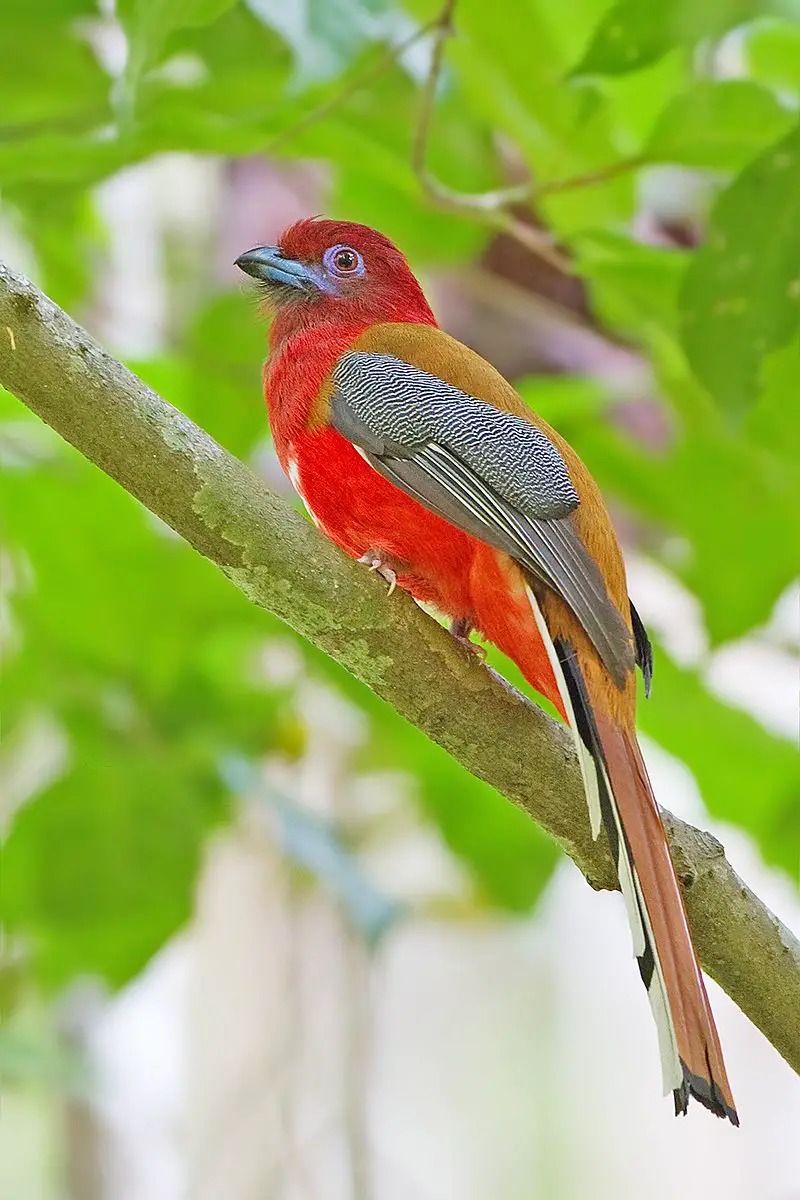
Trogons are a unique bird species that can be found all over the world. They belong to the order Trogoniformes and have only one family, called Trogonidae, which consists of 46 species in seven genera.
Fossil records show that trogons existed 49 million years ago during the Early Eocene period. It is believed they may be closely related or form part of two other orders: Coraciiformes and Passerines.
These birds typically have brightly colored feathers with some having iridescent colors on their wings and tails as well as red bellies and breasts.
Their diet mainly consists of fruit, insects, lizards and frogs but larger ones will also feed on small mammals such as mice or bats.
The most famous member from this group is Quetzalcoatlus – an extinct giant pterosaur which lived approximately 70-65 million years agoScientific classification:
| Kingdom | Animalia |
| Phylum | Chordata |
| Class | Aves |
| Clade | Cavitaves |
| Clade | Eucavitaves |
| Order | Trogoniformes AOU, 1886 |
| Family | Trogonidae Lesson, 1828 |
35. Bronzy Sunbird
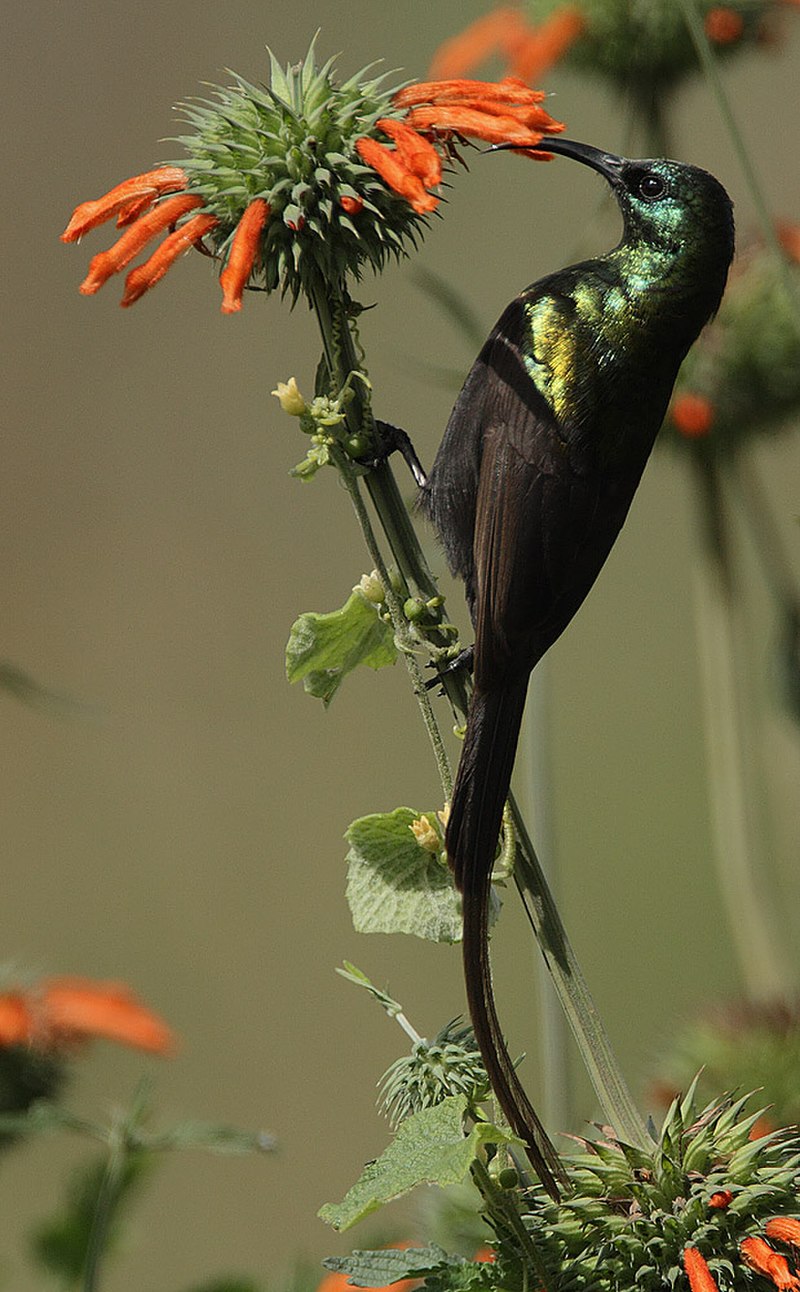
The Bronzy sunbird is a beautiful species of bird found in the family Nectariniidae, mostly within southern Africa. Males have an impressive bronze-green hue which can often look black when light strikes them.
Females are quite different as they possess a pale eyebrow and yellowish patch beneath their belly alongside other unique characteristics to distinguish themselves from males. These birds have long slender beaks that curve downwards at the tip – perfect for sipping nectar.
They love to flutter around flowers, lapping up delicious sweet liquid with their tongue whilst humming away happily. Not only do these birds provide us with beauty but also help pollinate plants and distribute seeds throughout nature’s gardens.Scientific classification:
| Kingdom | Animalia |
| Phylum | Chordata |
| Class | Aves |
| Order | Passeriformes |
| Family | Nectariniidae |
| Genus | Nectarinia |
| Species | N. kilimensis |
36. African Jacana
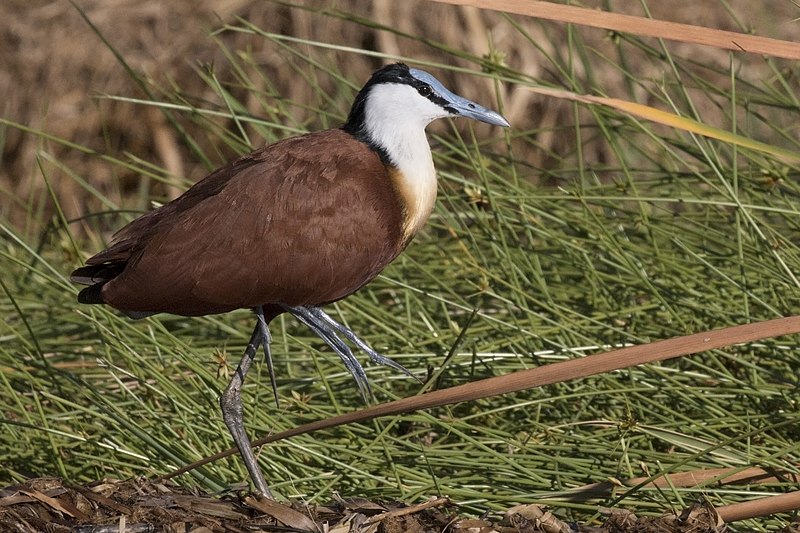
The African Jacana is a charming wader belonging to the family of Jacanidae, mostly found in sub-Saharan Africa.
It has long toes and claws that allow it to walk on floating vegetation in shallow lakes which form its preferred habitat.
The bird was officially described by Johann Friedri in 1789 with an interesting origin and pronunciation for its name -Jacanidae.
This aquatic bird is known for its striking plumage features like yellow crowns and black wings marked with chestnut brown stripes across them, making them look even more attractive when they spread their wing feathers during courtship displays.
They feed mainly on insects, tadpoles, frogs etc., skimming nearby water surface or plucking prey from vegetation as they wander around these wetlands areas.Scientific classification:
| Kingdom | Animalia |
| Phylum | Chordata |
| Class | Aves |
| Order | Charadriiformes |
| Family | Jacanidae |
| Genus | Actophilornis |
| Species | A. africanus |
37. Cardinal Woodpecker
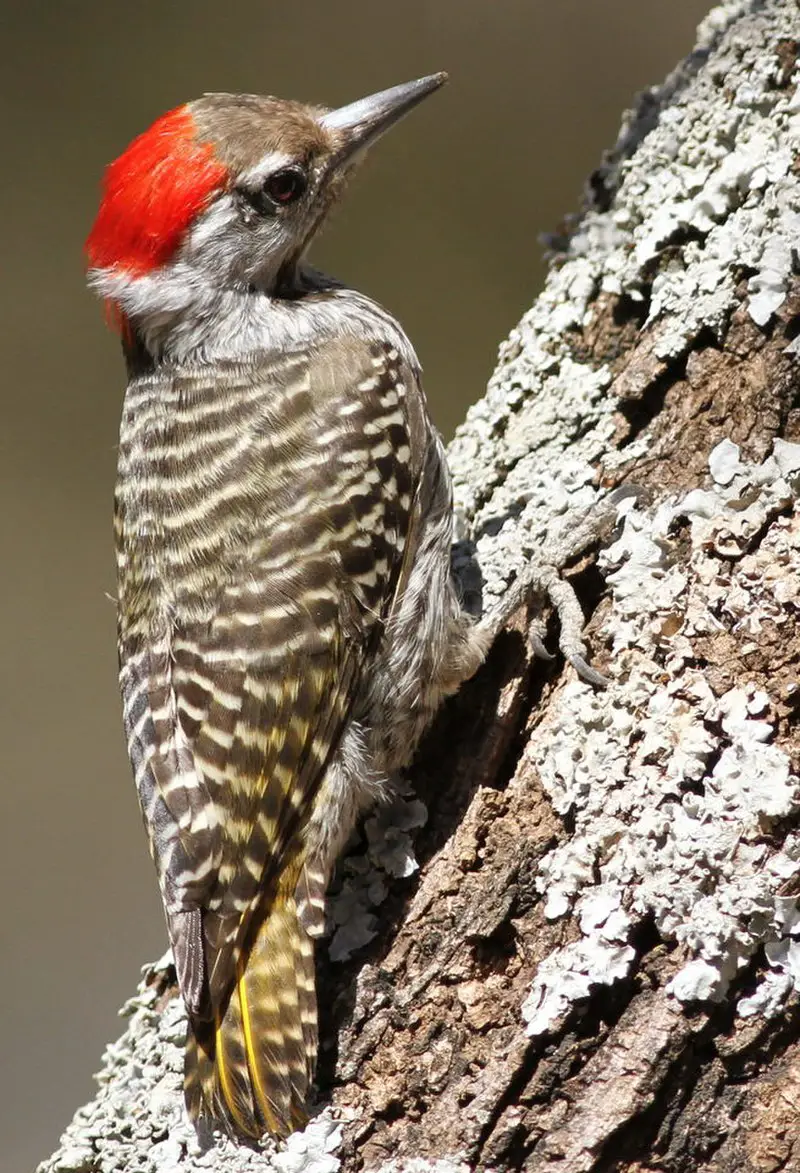
The Cardinal Woodpecker is a widespread and common resident found in much of sub-Saharan Africa. It inhabits various habitats, from dense forests to thorny bushlands, making it quite adaptable.
This species can be identified by its distinctive call notes as well as the difference between males and females which are distinguishable through their head patterns.
The bird was first described in 1818 by French ornithologist Louis Pierre Vieillot who recognized this unique species among other woodpeckers that inhabit the same region.
Despite being so widely spread throughout Africa, little is known about its behavior or population size due to lack of research on the subject – something that should surely change going forward.Scientific classification:
| Kingdom | Animalia |
| Phylum | Chordata |
| Class | Aves |
| Order | Piciformes |
| Family | Picidae |
| Genus | Dendropicos |
| Species | D. fuscescens |
Also Featured In: Birds of Etosha National Park,
38. Shelley’s Crimsonwing
Shelley’s crimsonwing is a striking species of estrildid finch. It is found in Burundi, eastern Democratic Republic of the Congo, Rwanda and western Uganda where it lives amongst low vegetation such as shrubs and grasses.
This beautiful bird has bright red-orange wings with yellowish underparts which make it stand out from its habitat.
Unfortunately Shelley’s Crimsonwings are facing significant population decline due to uncontrolled deforestation across their range which has resulted in an estimated 2,500–9,999 birds remaining today.
Conservation efforts need to be put into place urgently if we wish for this unique species to survive for future generations to admire.Scientific classification:
| Kingdom | Animalia |
| Phylum | Chordata |
| Class | Aves |
| Order | Passeriformes |
| Family | Estrildidae |
| Genus | Cryptospiza |
| Species | C. shelleyi |
39. Woodland Kingfisher
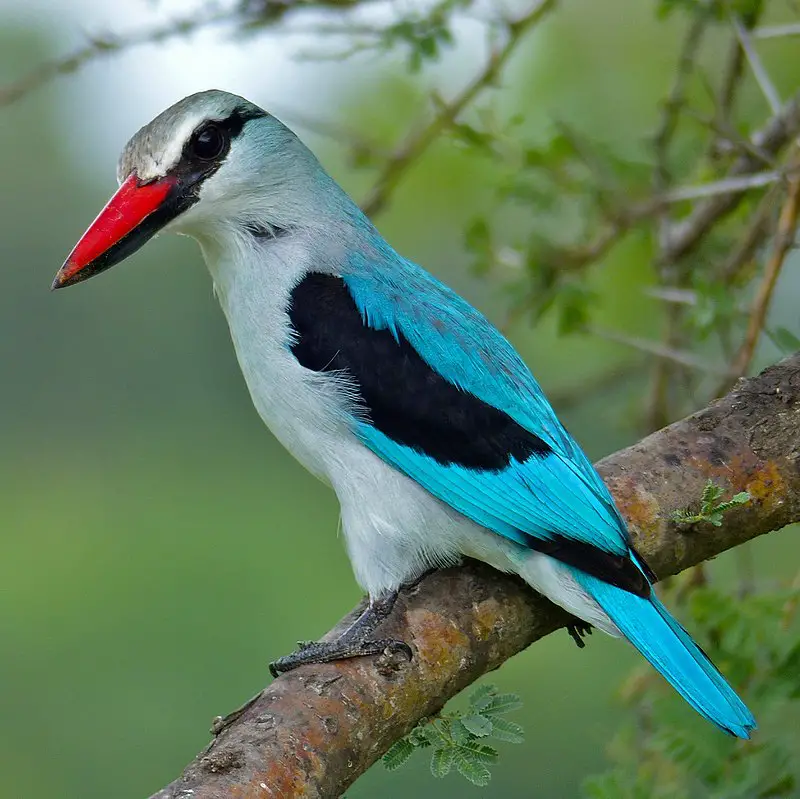
The Woodland Kingfisher is a beautiful bird, native to Africa south of the Sahara. It was first described in 1766 by Carl Linnaeus who called it Alcedo senegalensis.
This tree kingfisher has an attractive blue and white plumage with some red and black markings on its wings, tail and head.
The male also has a bright orange beak which helps to distinguish him from the female whose beak is yellowish-green.
These birds can usually be found in wooded areas near water sources such as rivers or lakes where they hunt for food including fish, frogs, small insects and even lizards.
They build their nests either high up in trees or inside holes dug out of banks near rivers and ponds.
Although not threatened yet, these lovely creatures need our protection so that future generations will have the chance to marvel at them too.Scientific classification:
| Kingdom | Animalia |
| Phylum | Chordata |
| Class | Aves |
| Order | Coraciiformes |
| Family | Alcedinidae |
| Subfamily | Halcyoninae |
| Genus | Halcyon |
| Species | H. senegalensis |
40. Black-Headed Gonolek
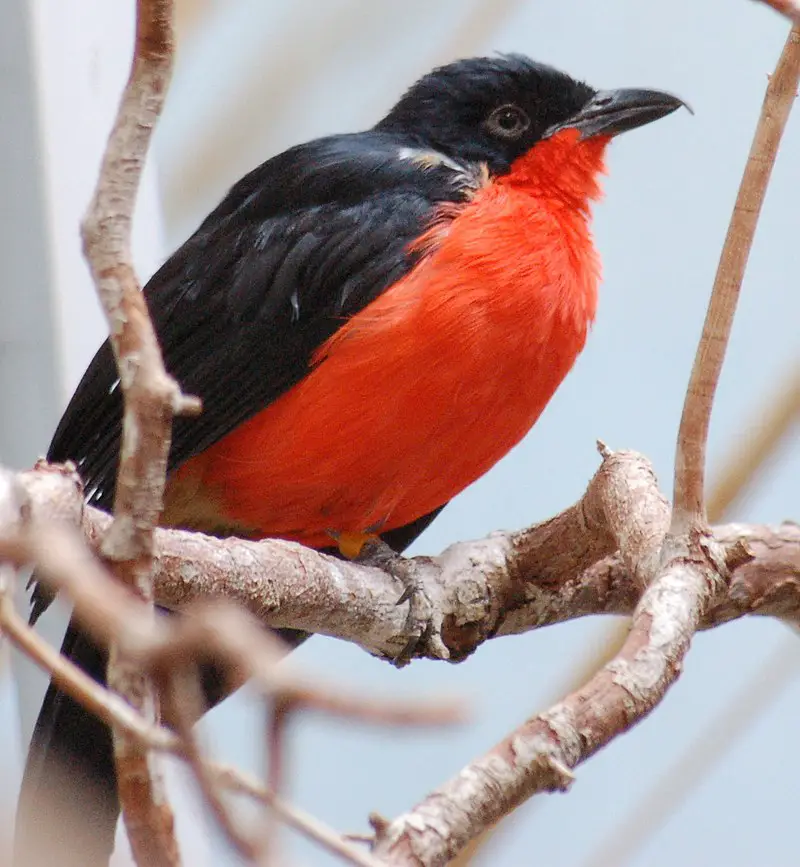
The Black-headed Gonolek is a beautiful bird found in Central and East Africa. It belongs to the Malaconotidae family, which includes birds such as shrikes and bushshrikes.
These birds are usually encountered singly or in pairs, perched atop shrubs or trees. They have black heads with white streaks running through them along with red chests, brown wings and tails, yellow bellies and grayish-white legs.
The diet of these birds consists mostly of insects but they also eat small fruits from time to time. As their natural habitats consist of dry savannas, moist shrublands or seasonal forests; it makes for an ideal breeding ground for these species as there’s plenty of food available throughout the year.Scientific classification:
| Kingdom | Animalia |
| Phylum | Chordata |
| Class | Aves |
| Order | Passeriformes |
| Family | Malaconotidae |
| Genus | Laniarius |
| Species | L. erythrogaster |
41. Red-Chested Sunbird
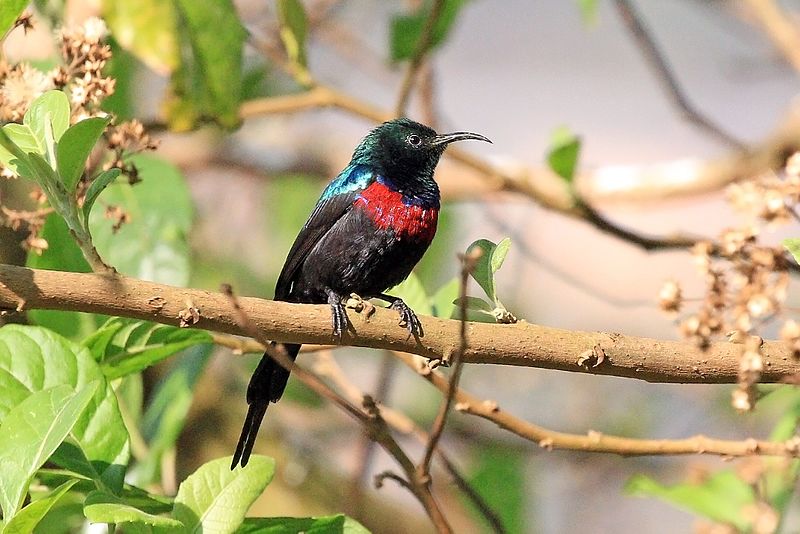
The red-chested sunbird is a species of bird that belongs to the Nectariniidae family. These birds are native to seven countries in Africa, including Ethiopia, Burundi and Uganda.
They have distinctive chestnut coloring on their underside with dark wings and tail feathers. The red-chested sunbird was first described by Gustav Hartlaub back in 1857 after specimens were found near the White Nile riverbanks.
In addition to its beautiful colors, they also possess long curved beaks which they use for feeding off nectars from flowers as well as insects such as grasshoppers or butterflies. You can spot them moving around rapidly amongst foliage looking for food sources or building nests out of twigs and mosses high up in trees.Scientific classification:
| Kingdom | Animalia |
| Phylum | Chordata |
| Class | Aves |
| Order | Passeriformes |
| Family | Nectariniidae |
| Genus | Cinnyris |
| Species | C. erythrocercus |
42. Dwarf Honeyguide
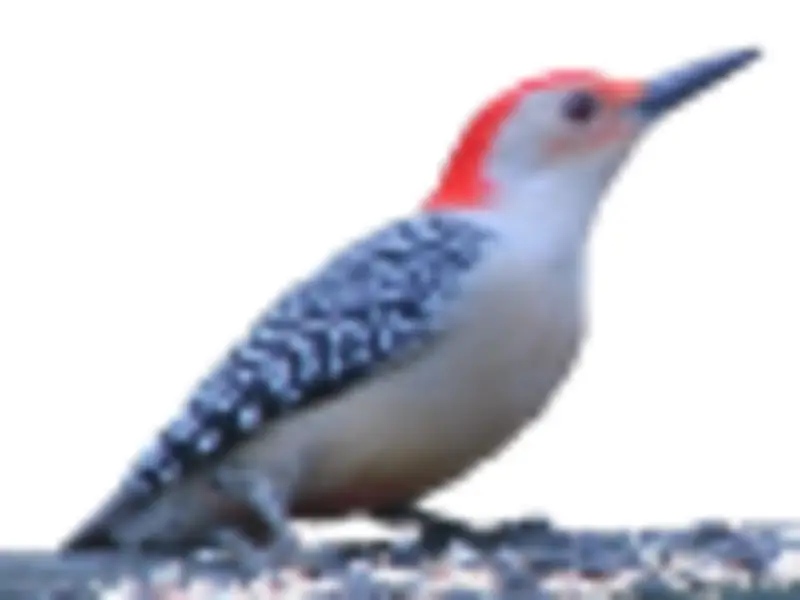
The Dwarf honeyguide is a small bird endemic to the Albertine Rift montane forests. It belongs to the family Indicatoridae, which includes other species of Honeyguides.
This particular species is threatened by habitat loss and uses brood parasitism as an adaptation for survival. As a result, it will lay its eggs in another host’s nest so that they can be incubated and fed by their foster parents.
These birds have adapted to survive in harsh conditions due to human encroachment on their natural habitats, but conservation efforts are still necessary if this species is going to continue thriving into future generations.Scientific classification:
| Kingdom | Animalia |
| Phylum | Chordata |
| Class | Aves |
| Order | Piciformes |
| Family | Indicatoridae |
| Genus | Indicator |
| Species | I. pumilio |
43. Bare-Faced Go-Away-Bird
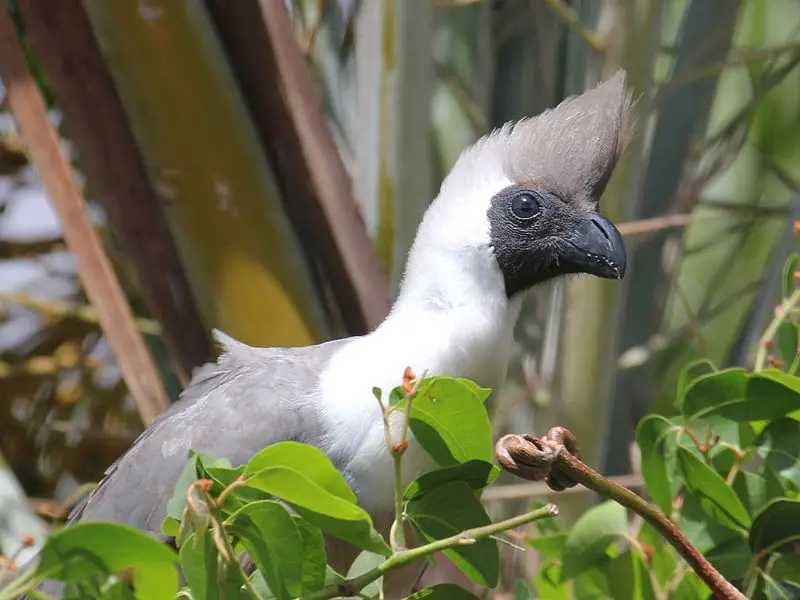
The Bare-faced go-away-bird is an eye catching species of bird native to eastern Afrotropics. It stands out due to its unique bare black face, setting it apart from other birds in the Musophagidae family.
Both sexes are similar except for the female’s green beak and both measure about 19 inches long with a weight of 210 – 300 grams.
These birds make quite a bit of noise as they move around restlessly throughout their habitat, making them easily recognizable by sound alone.
They feed mainly on fruits such as figs and berries which gives them plenty energy for all that movement.
All in all, this species makes an interesting addition to any nature enthusiast’s list of sightings or even just backyard visitors.Scientific classification:
| Kingdom | Animalia |
| Phylum | Chordata |
| Class | Aves |
| Order | Musophagiformes |
| Family | Musophagidae |
| Genus | Crinifer |
| Species | C. personatus |
44. Double-Toothed Barbet
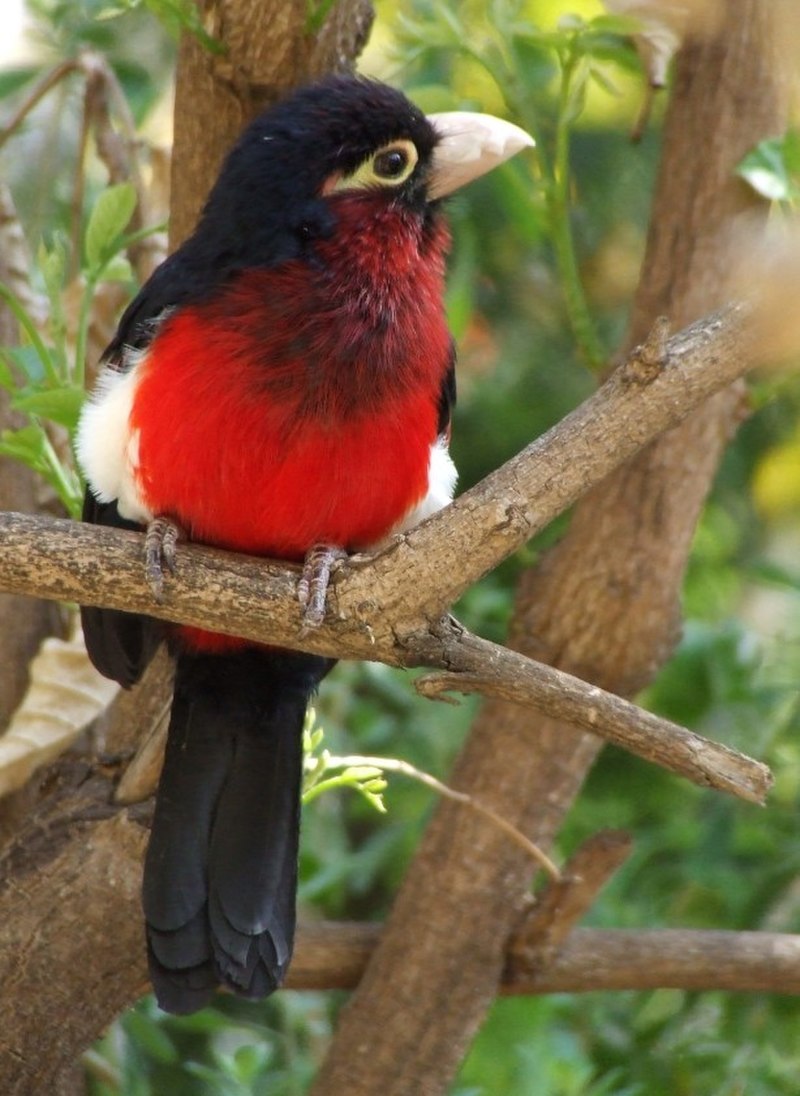
The Double-toothed Barbet is a species of bird found in many parts of Africa. It has two tooth-like projections on its beak and an olive or yellowish green body with black streaking and spots.
The male also displays bright red facial markings during the breeding season, which makes it easily distinguishable from other barbets. They inhabit mostly evergreen forests, but can sometimes be seen in semiarid areas as well.
These birds have complex calls that are used to proclaim territory ownership and attract mates; they even use them to communicate with one another while foraging. As omnivores, their diet consists mainly of fruits, nuts, insects and some small lizards or frogs occasionally too.
All in all these unique little creatures provide us with much delight when we spy them out there hopping between trees.Scientific classification:
| Kingdom | Animalia |
| Phylum | Chordata |
| Class | Aves |
| Order | Piciformes |
| Family | Lybiidae |
| Genus | Lybius |
| Species | L. bidentatus |
45. Little Bee-Eater
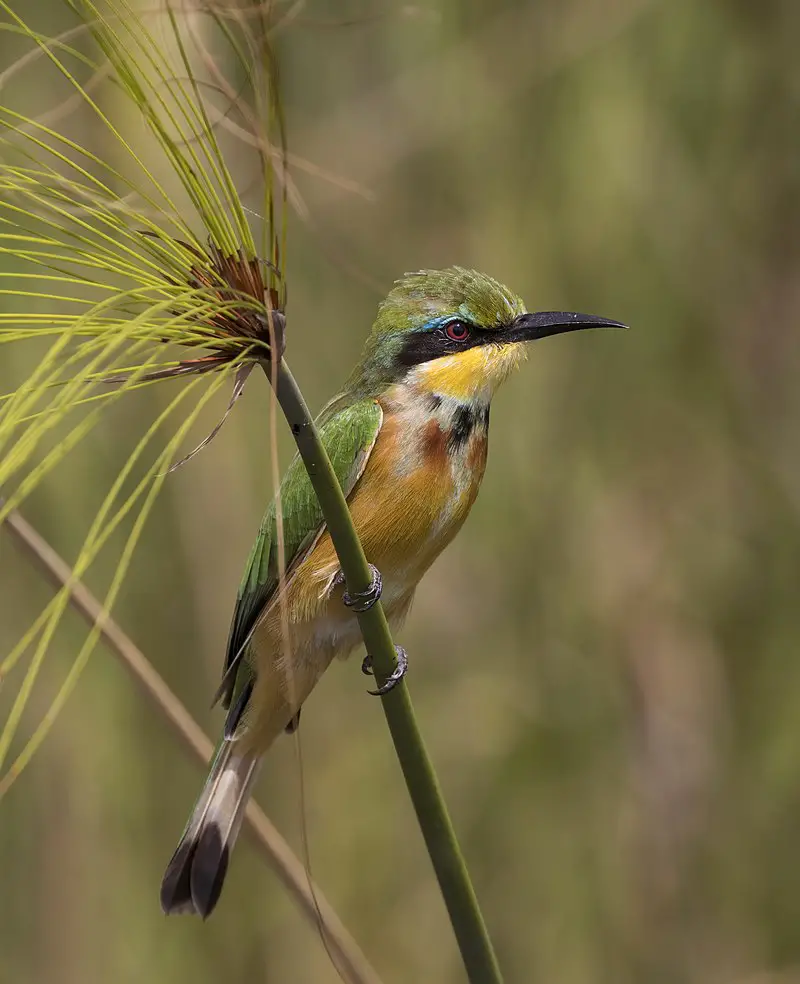
The Little Bee-eater (Merops pusillus) is a beautiful species of bird belonging to the family Meropidae.
These birds are found in much of Sub-Saharan Africa and their migration patterns depend on seasonal rainfall changes.
They have slender, brightly coloured bodies with an iridescent green sheen across the wings and back.
Their diet consists mainly of bees, wasps, dragonflies, moths and other insects which they catch mid-air or from perches above open grasslands or along mudbanks near water sources like rivers and lakes.
In order for these birds to digest their food properly before swallowing it whole, they use pebbles that help them grind up hard exoskeletons so as not to cause any blockages within their digestive tract – something only bee-eaters do.Scientific classification:
| Kingdom | Animalia |
| Phylum | Chordata |
| Class | Aves |
| Order | Coraciiformes |
| Family | Meropidae |
| Genus | Merops |
| Species | M. pusillus |
46. African Grey Hornbill
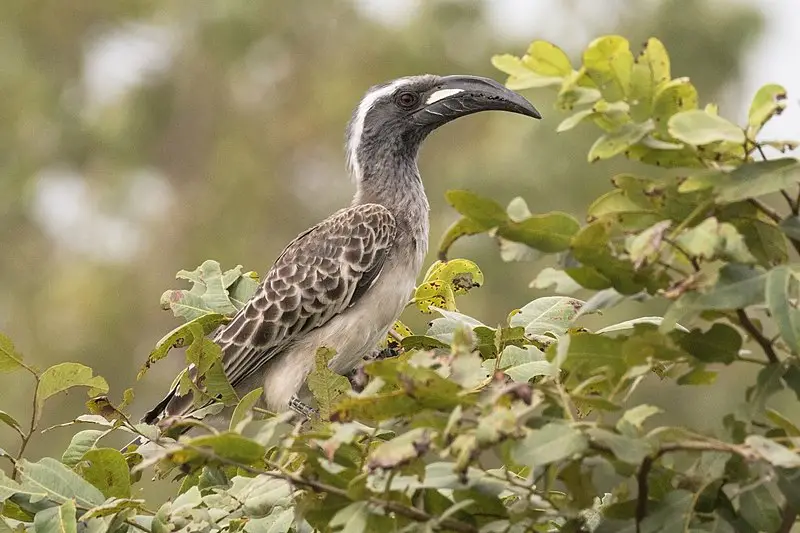
The African grey hornbill is a large bird with striking black and white plumage. Its most recognizable feature is its long, down-curved bill which has a red base and yellow tip.
They are found in sub-Saharan Africa as well as Arabia and have been known to escape or be released into Florida where they may not be breeding yet.
Their diet mainly consists of fruits, insects, small reptiles and amphibians making them important seed dispersers for their habitats.
Hornbills play an important role in the ecosystem by controlling pests like locusts while also providing food for predators such as eagles or larger cats.
These birds are often kept as pets but can become very demanding due to their intelligence so potential owners should do research before considering one of these amazing creatures.Scientific classification:
| Kingdom | Animalia |
| Phylum | Chordata |
| Class | Aves |
| Order | Bucerotiformes |
| Family | Bucerotidae |
| Genus | Lophoceros |
| Species | L. nasutus |
47. White-Browed Coucal
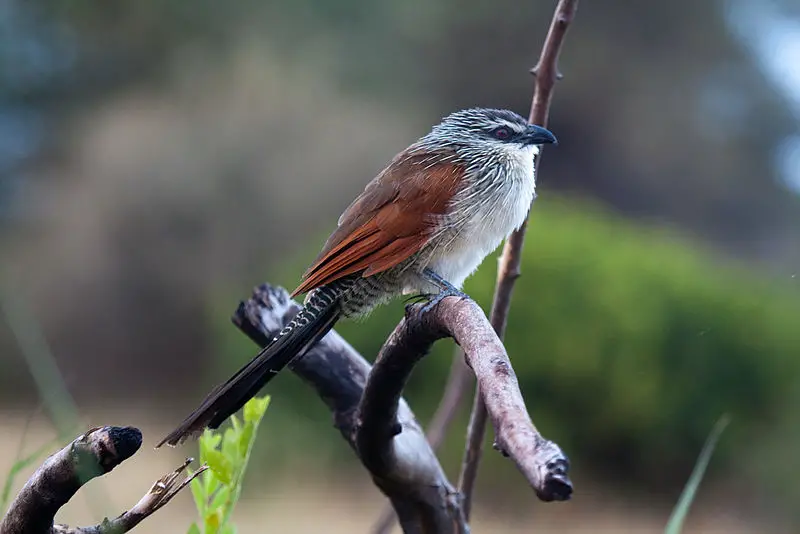
The White-browed Coucal is a species of bird belonging to the Cuculidae family. It can be found in sub-Saharan Africa, inhabiting thick vegetation and rank undergrowth as well as coastal regions.
This medium-sized cuckoo has a length between 36 and 42 cm and is sometimes considered a subspecies of Burchell’s coucal.
Its main distinguishing feature is its white eyebrow which extends towards the back of its head, giving it an elegant look that makes it stand out from other birds in its habitat.
Additionally, this species also features black plumage with some yellow spots on their wings and tail feathers for extra beauty points.
All in all, these fascinating creatures make great additions to any wildlife enthusiast’s list of spotted animals.Scientific classification:
| Kingdom | Animalia |
| Phylum | Chordata |
| Class | Aves |
| Order | Cuculiformes |
| Family | Cuculidae |
| Genus | Centropus |
| Species | C. superciliosus |
48. Black-Headed Weaver
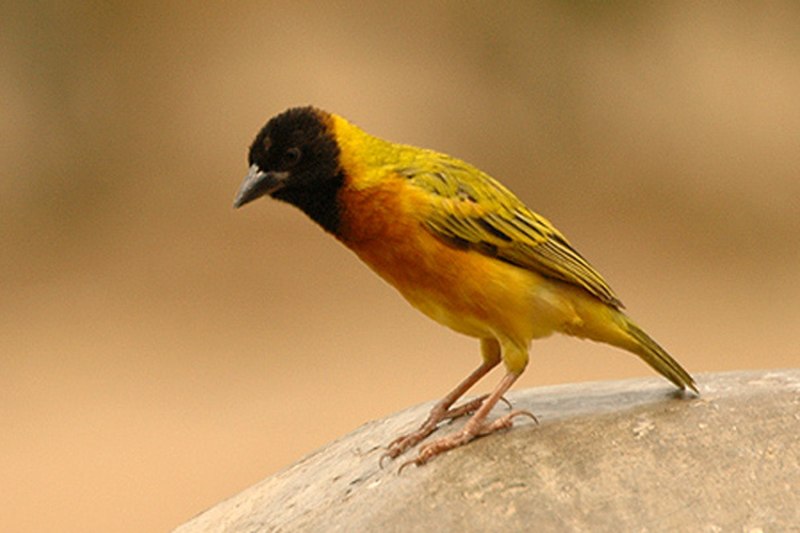
The Black-headed Weaver is a species of bird found in the Ploceidae family. It is mainly identified by its black head and yellow nuchal collar, which distinguishes it from other similar weaver birds.
During breeding season males have these features while females usually lack them. The Juba and Golden-backed Weavers are very close relatives to this species but can be differentiated due to their physical characteristics as well as behaviour patterns.
P victoriae Ash has been determined as hybrid between the Black-headed Weaver and Ploceus castanops so they should not be confused with each other when observing in nature or captivity.
All three weave intricate nests out of grasses that hang like pendants from trees near open water sources where food is abundant for these active birds who spend most of their time foraging or constructing homes together within large coloniesScientific classification:
| Kingdom | Animalia |
| Phylum | Chordata |
| Class | Aves |
| Order | Passeriformes |
| Family | Ploceidae |
| Genus | Ploceus |
| Species | P. melanocephalus |
49. Red-Faced Barbet
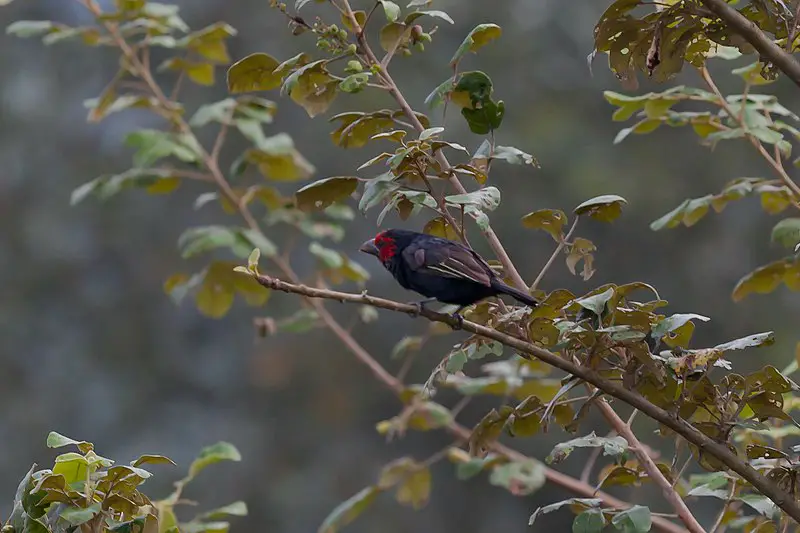
The Red-faced barbet is a captivating bird belonging to the African barbet family Lybiidae. It is found in Burundi, Rwanda, Northwest Tanzania and Southwest Uganda and inhabits dry savanna, moist savanna and arable land.
At only 17 cm (6.7 inches) long it’s one of the smaller species from this family. Its unique red coloring on its sides make it stand out amongst other birds in its habitat as well as being incredibly striking when seen up close.
Unfortunately due to loss of habitat this magnificent creature has become endangered but conservation efforts are continuing so that future generations can continue to admire their beauty for years to come.Scientific classification:
| Kingdom | Animalia |
| Phylum | Chordata |
| Class | Aves |
| Order | Piciformes |
| Family | Lybiidae |
| Genus | Lybius |
| Species | L. rubrifacies |
Also Featured In: Birds that Live in lake Mburo National Park,